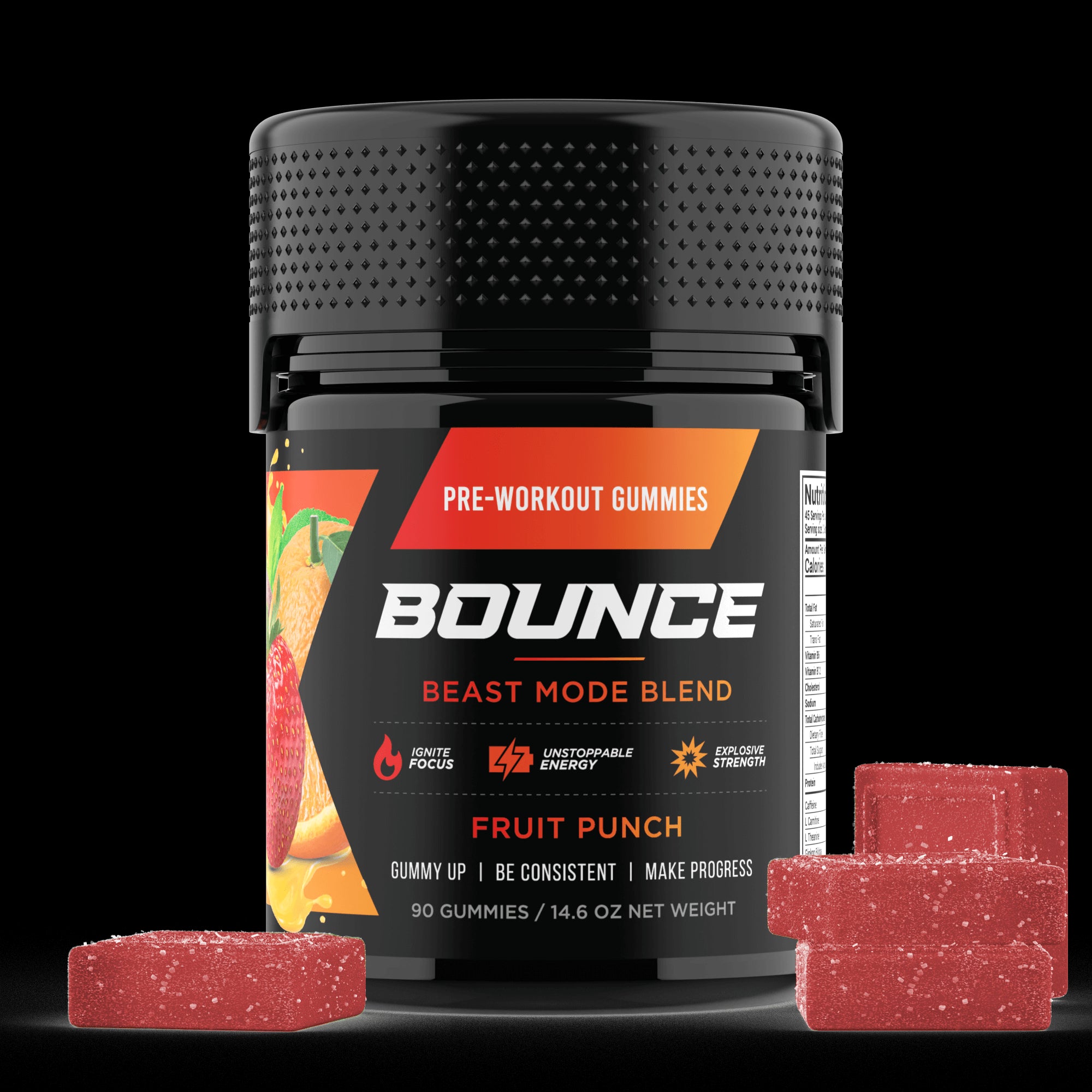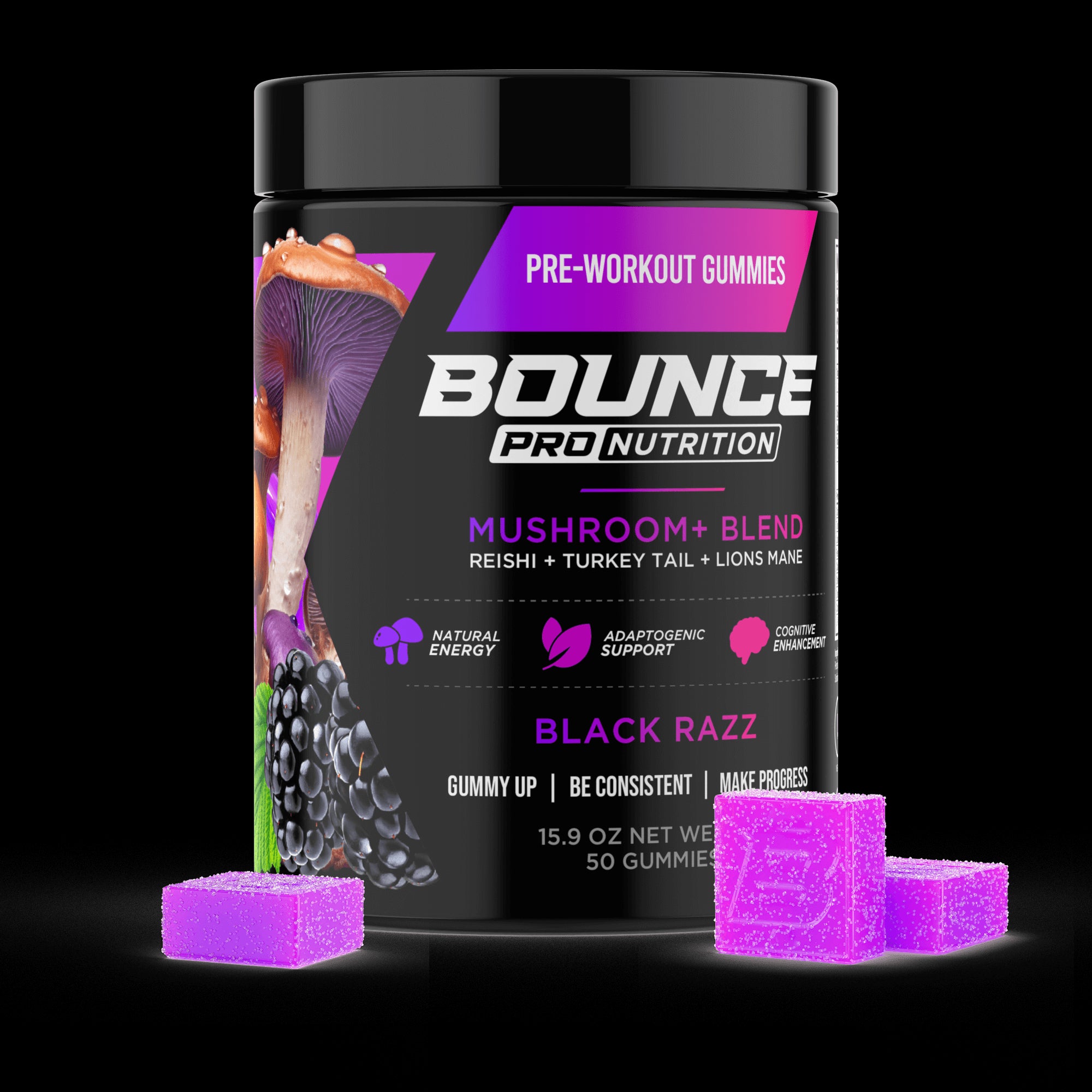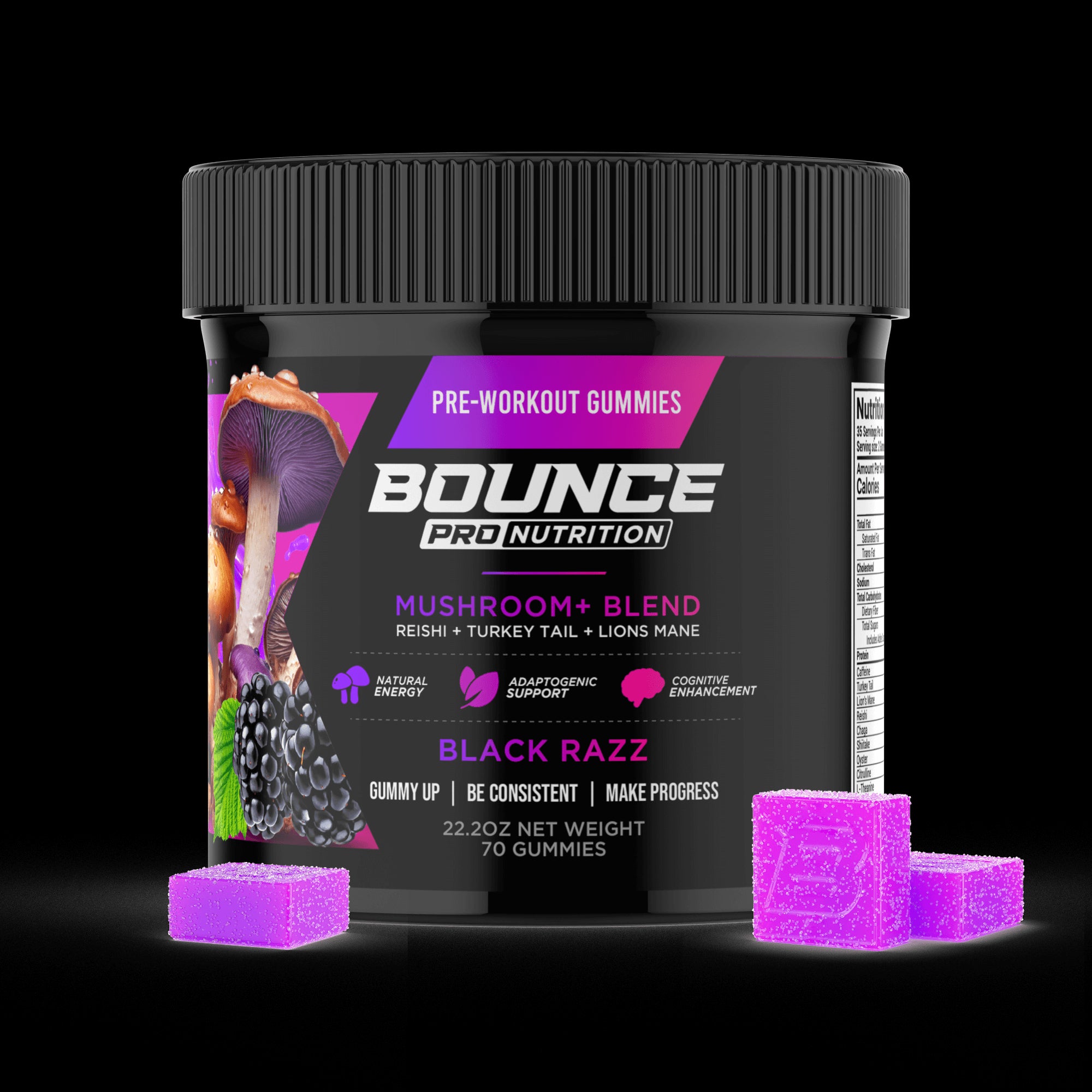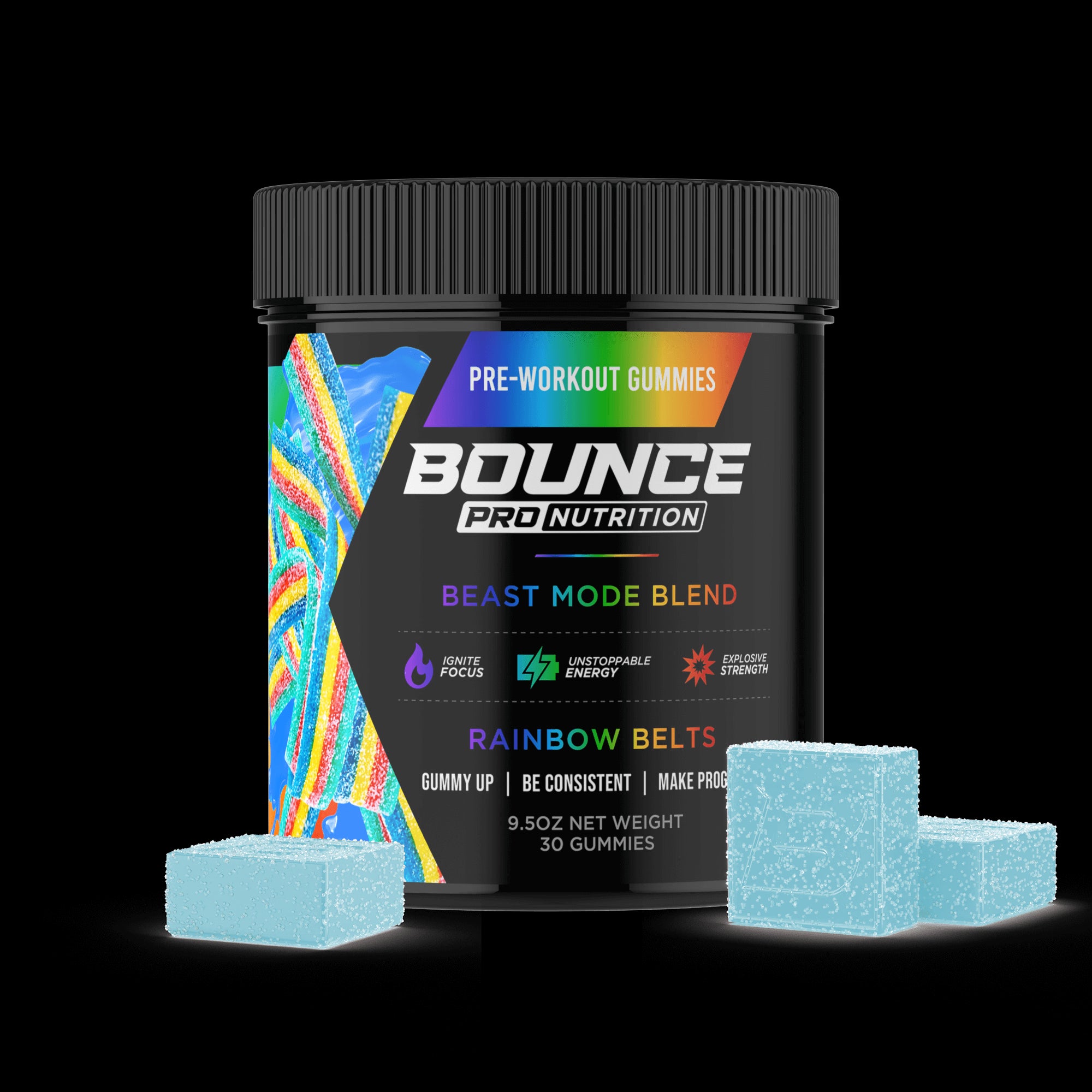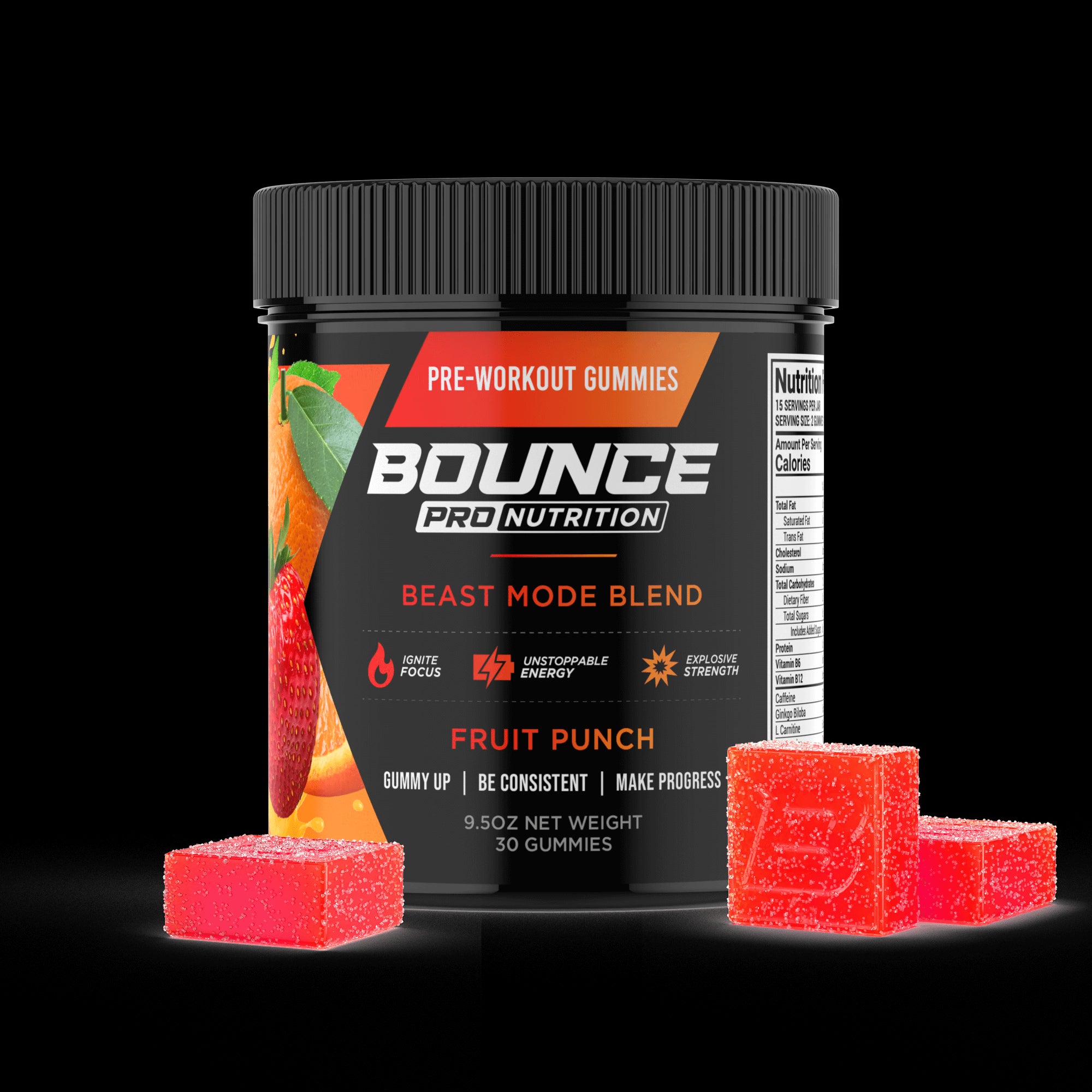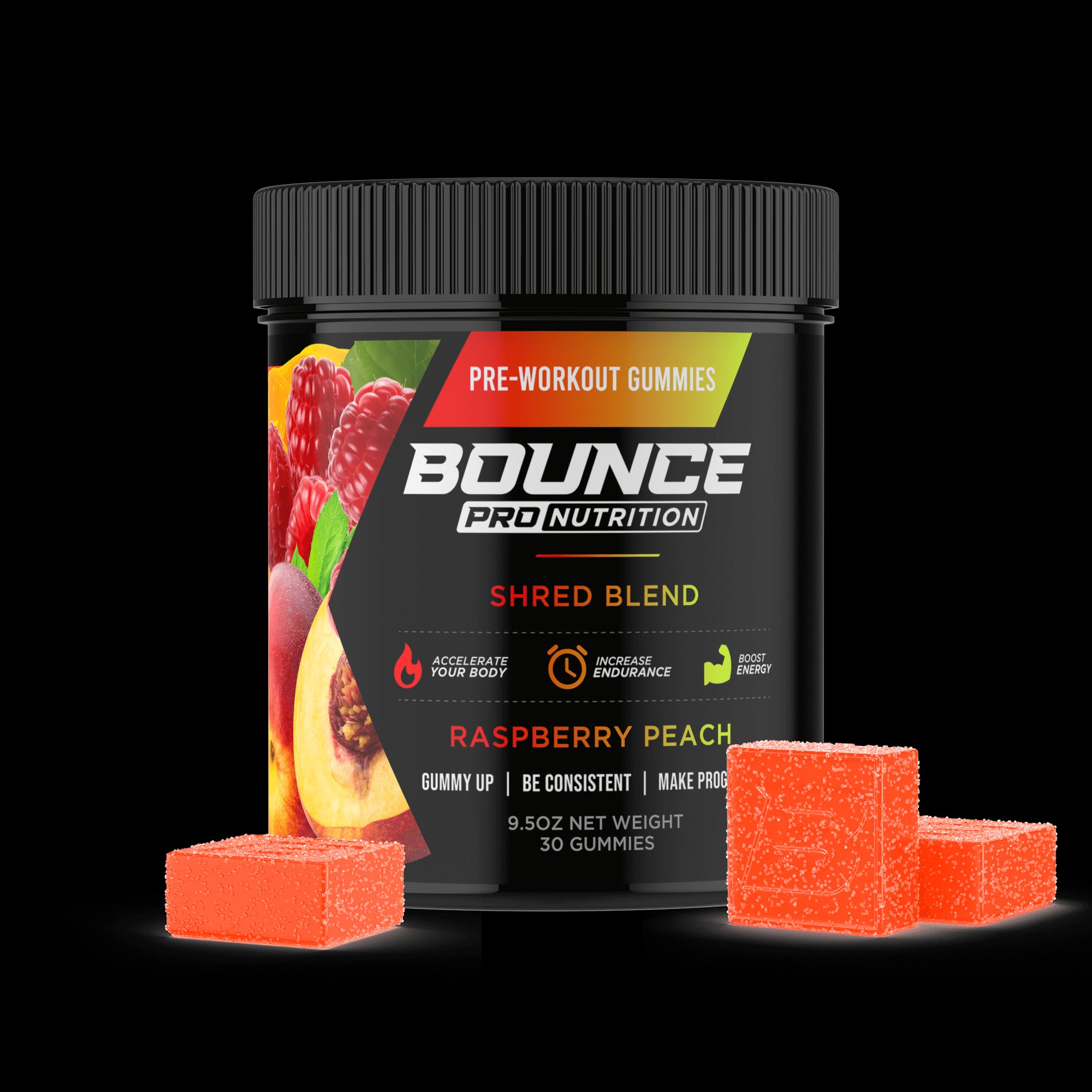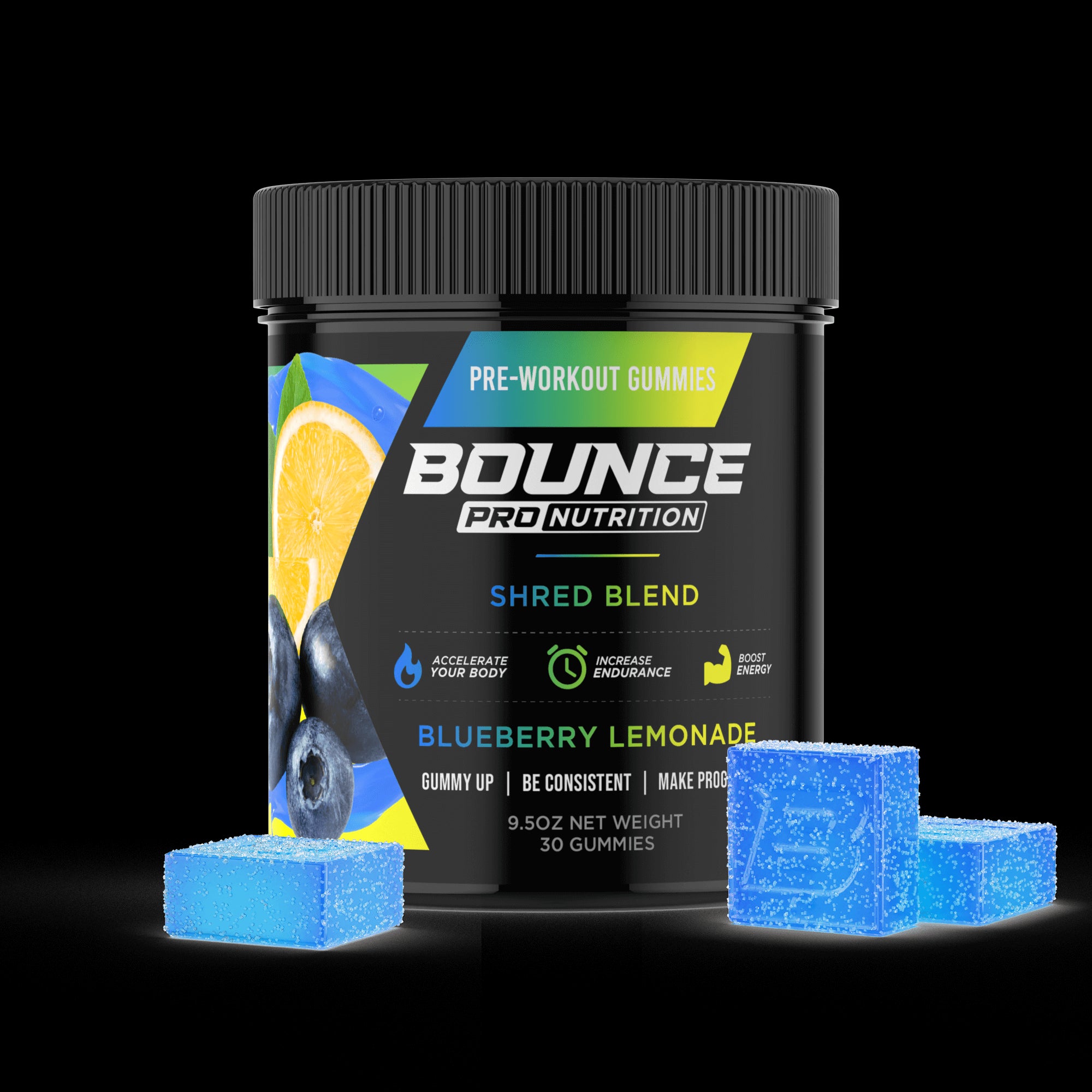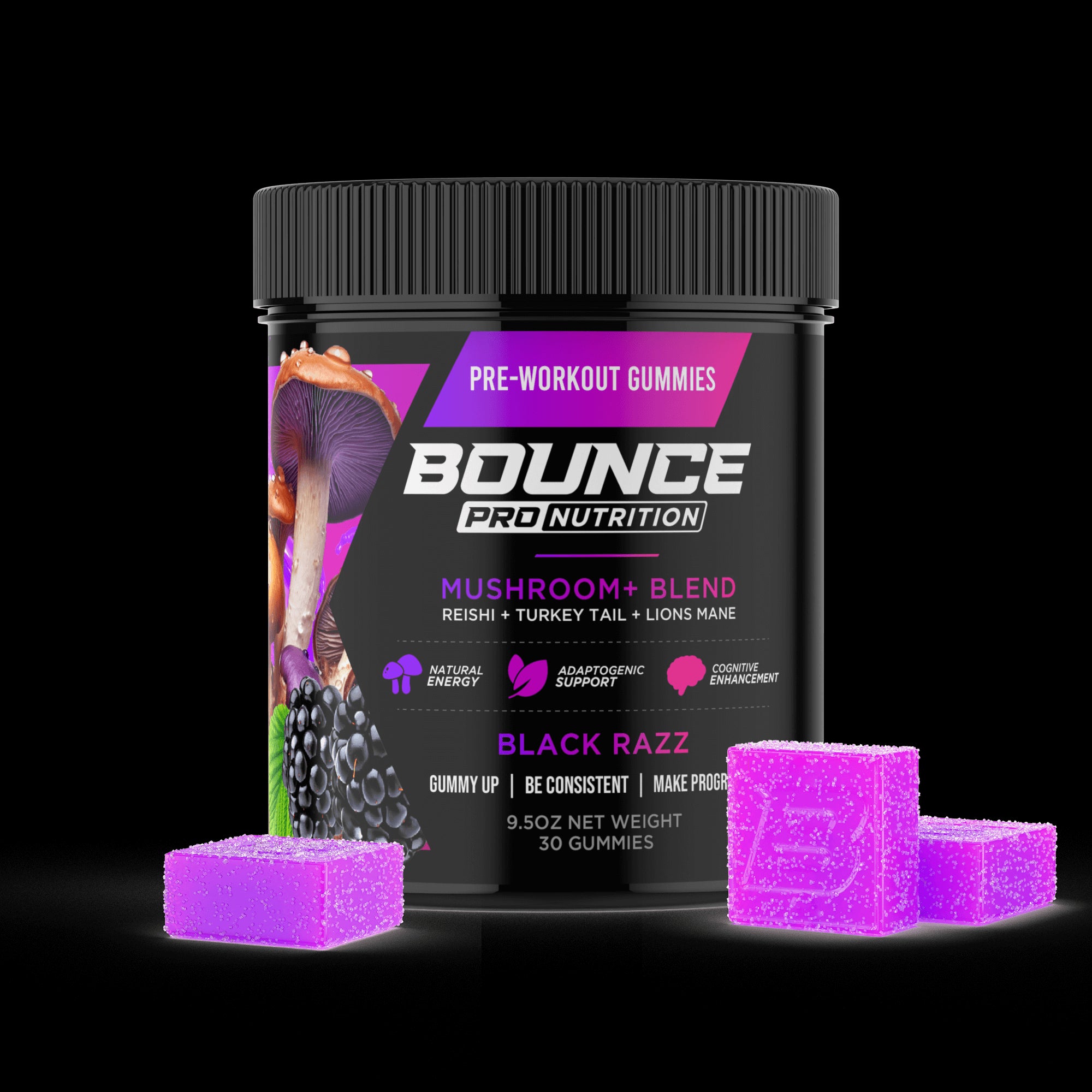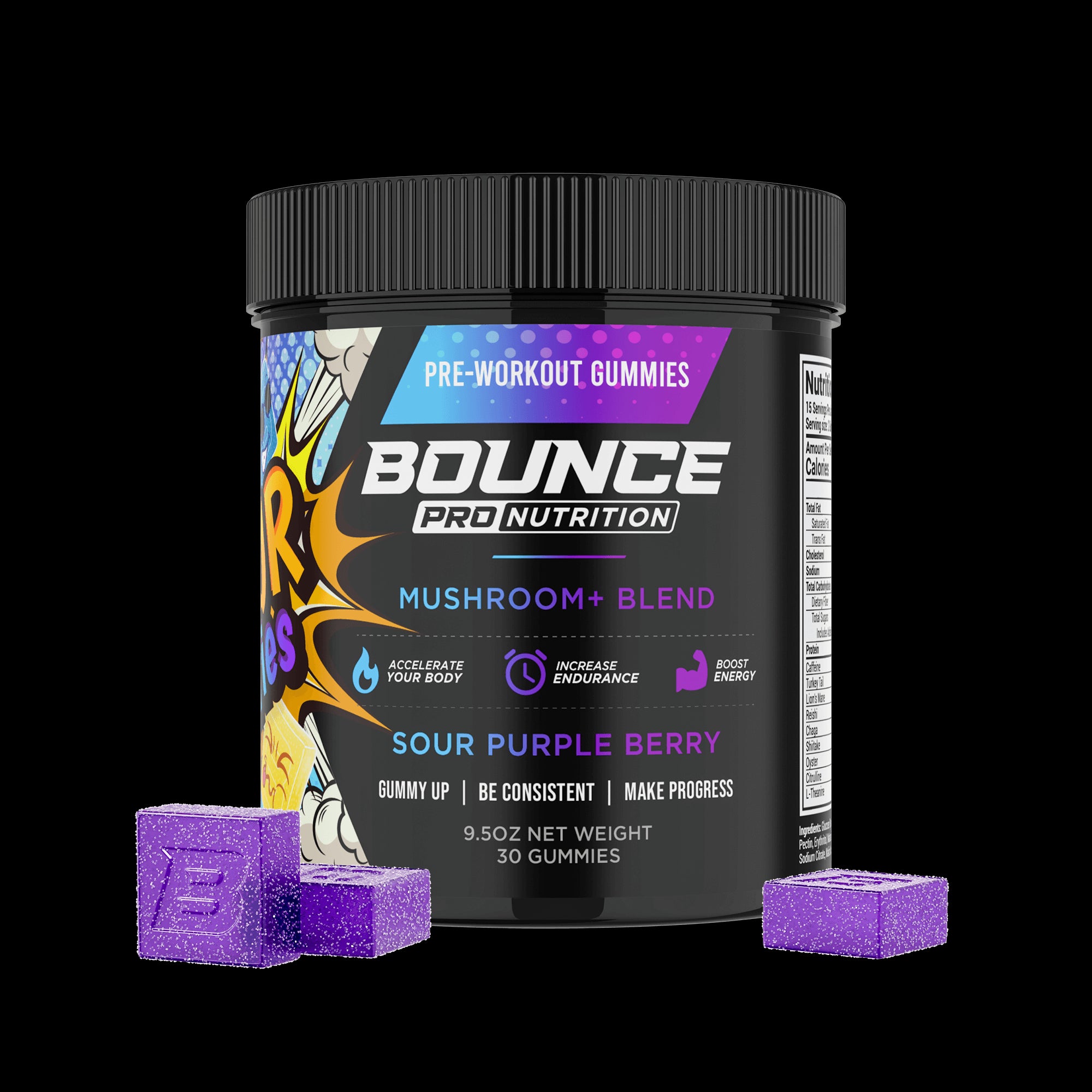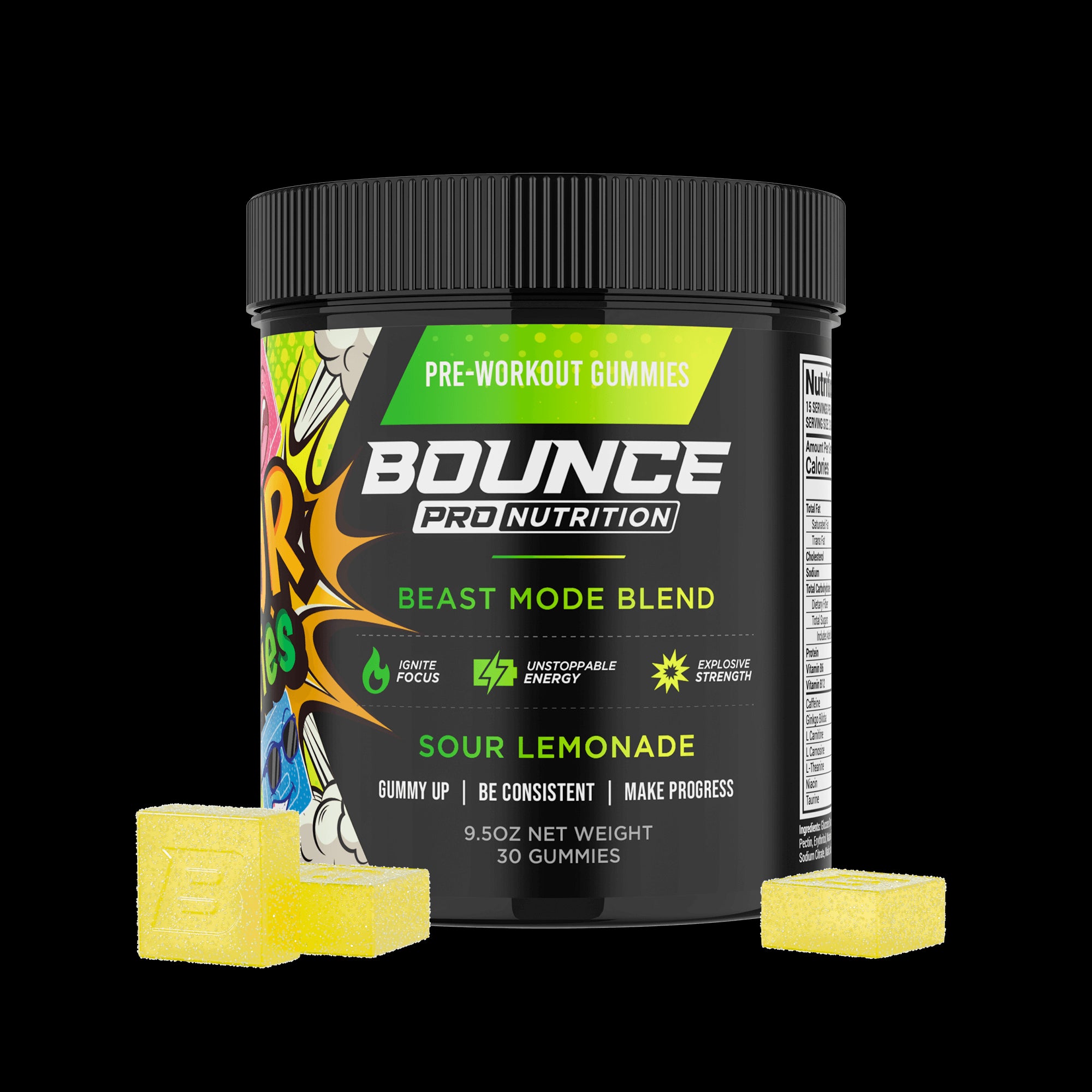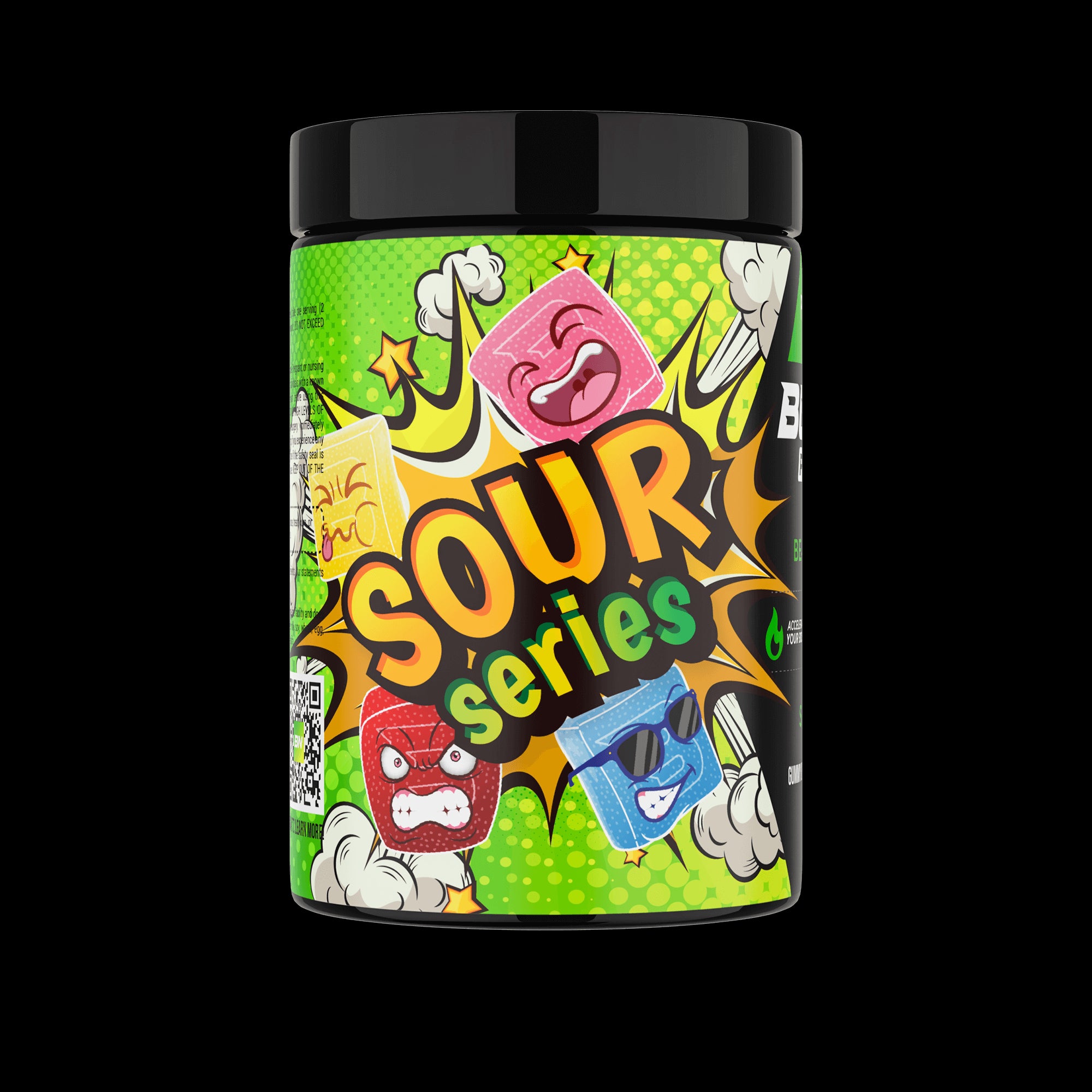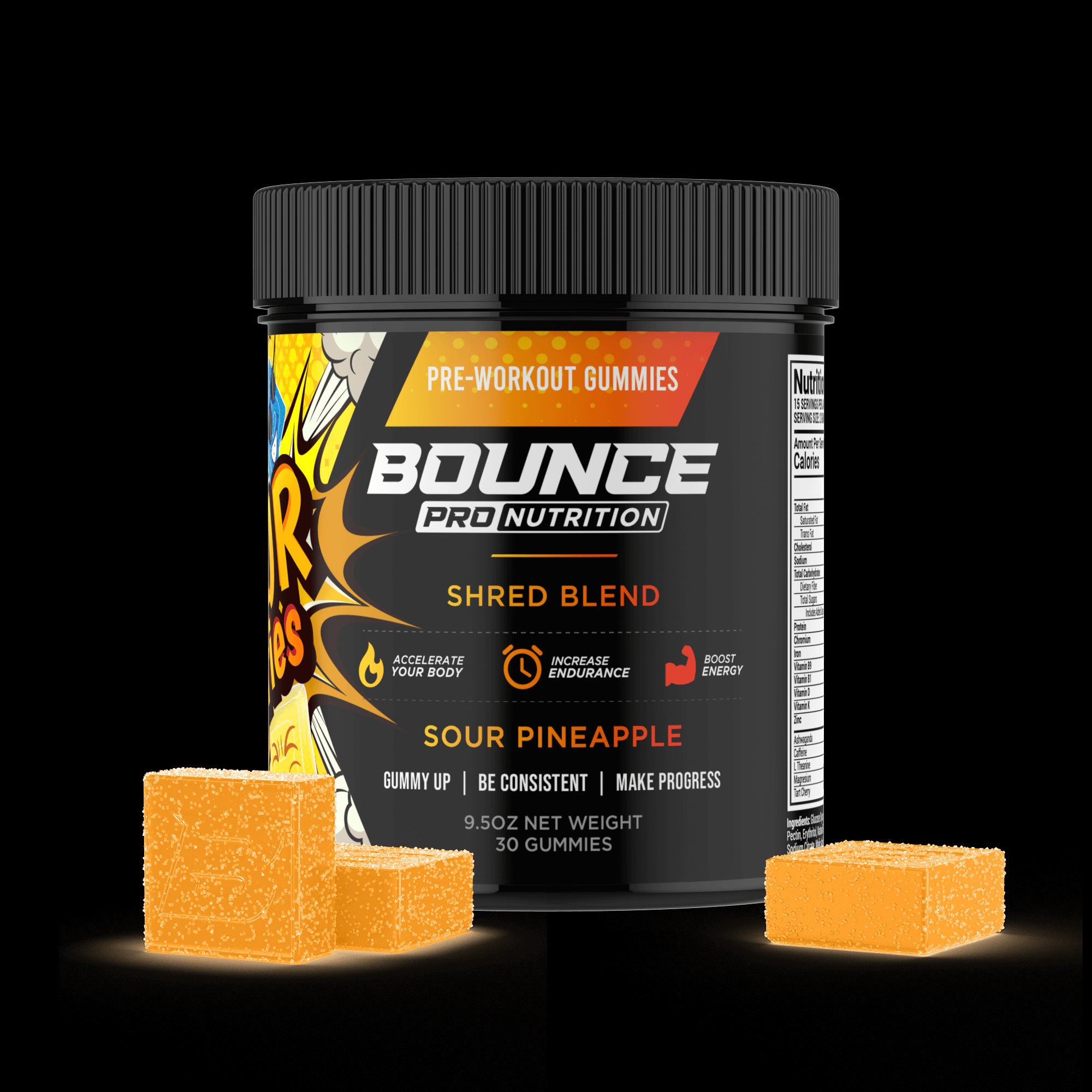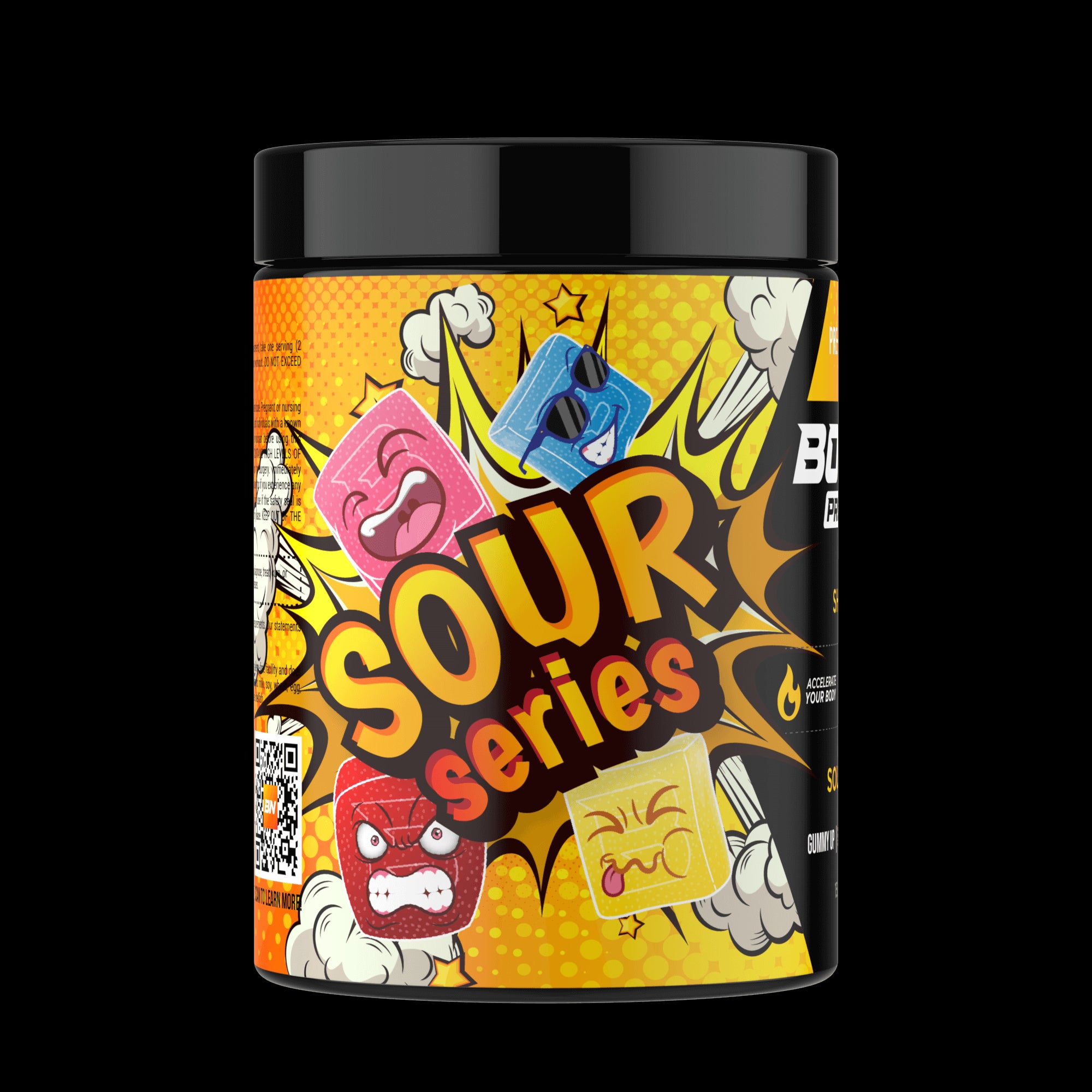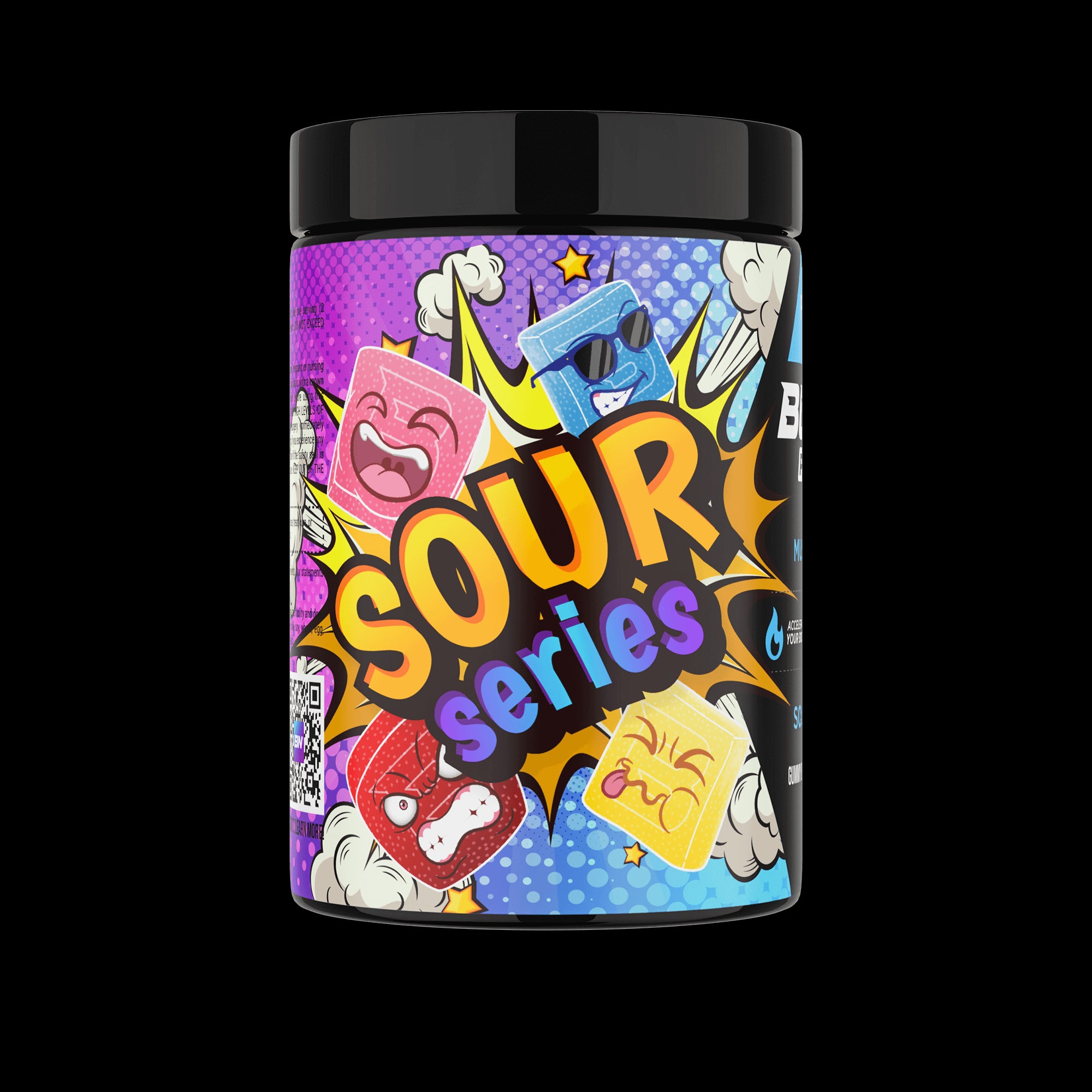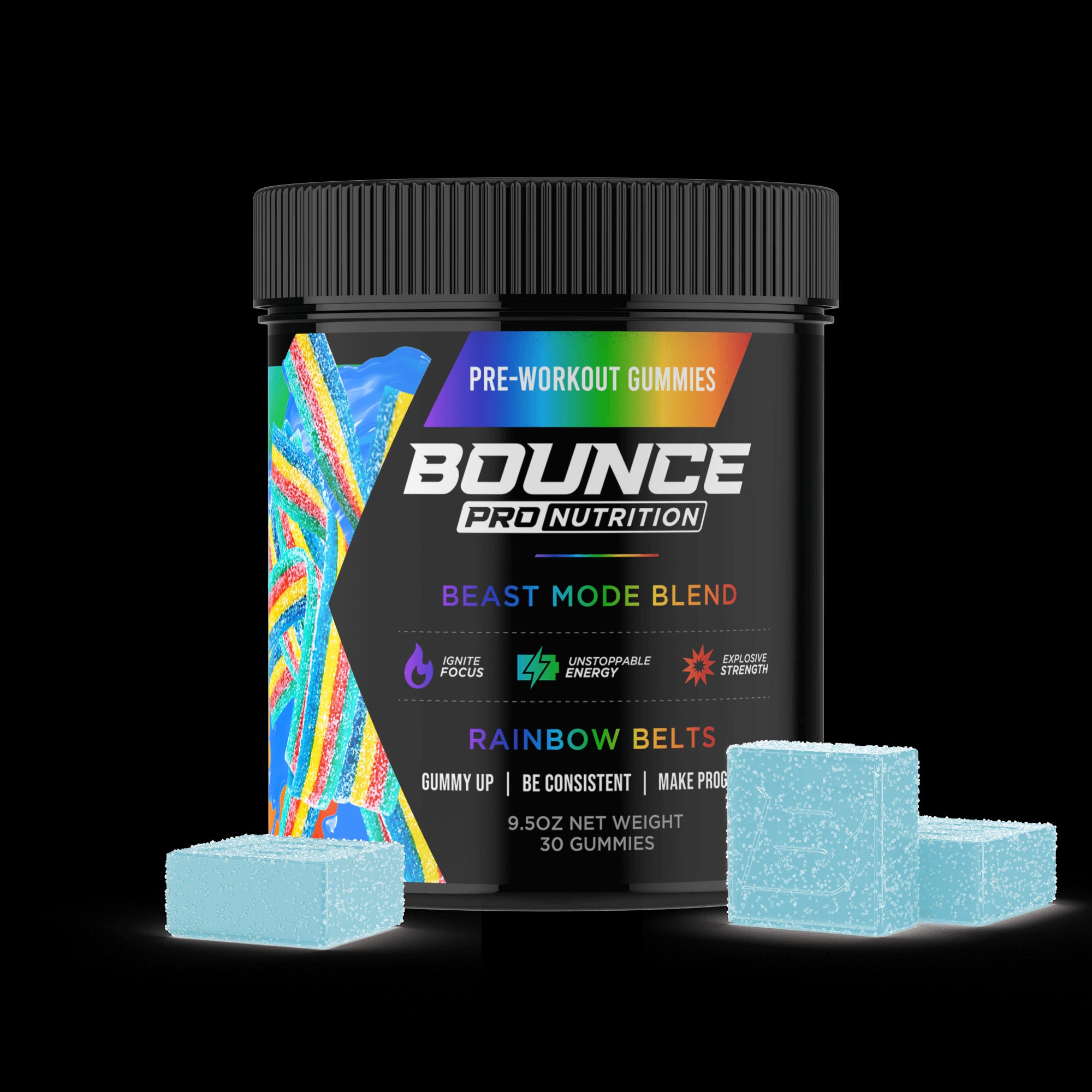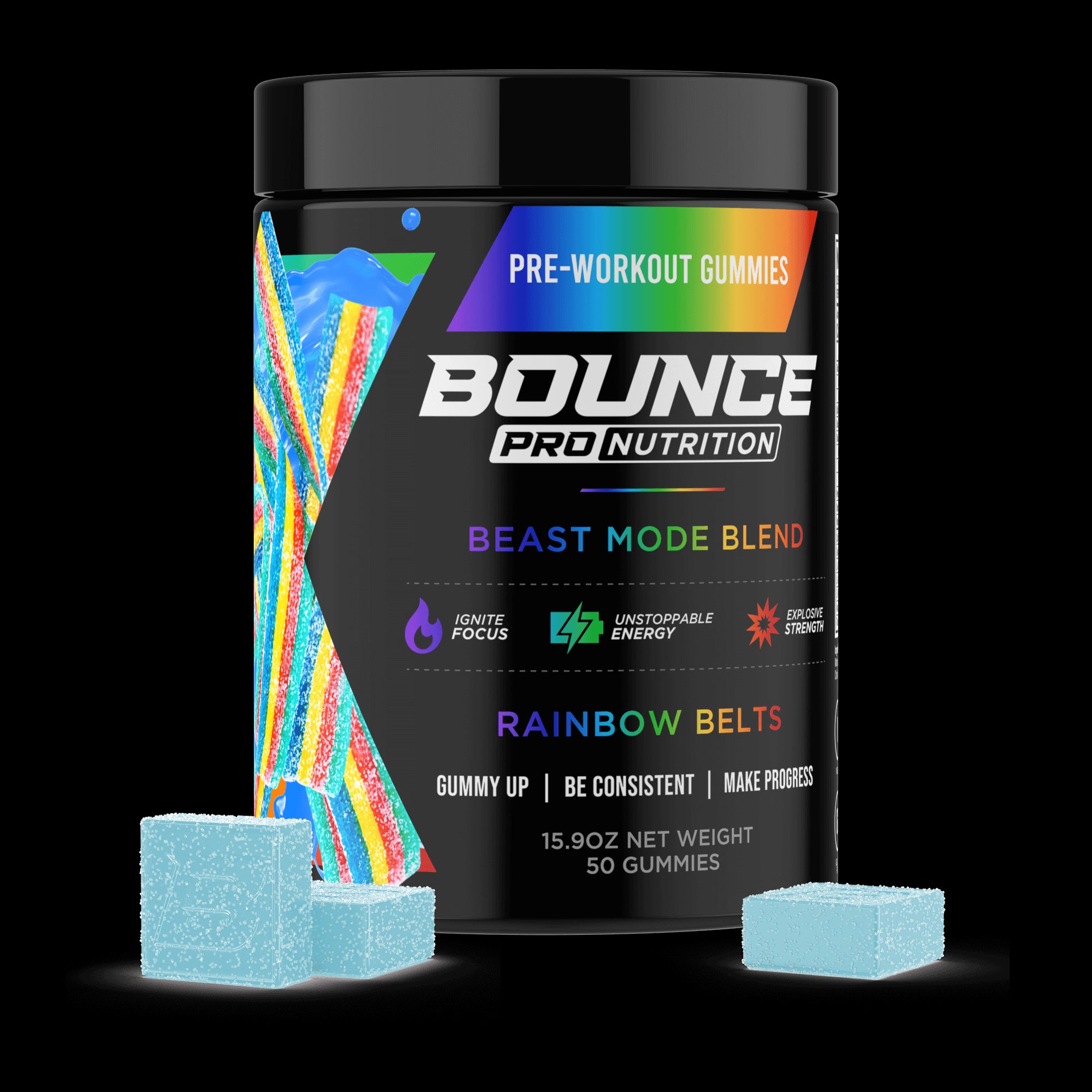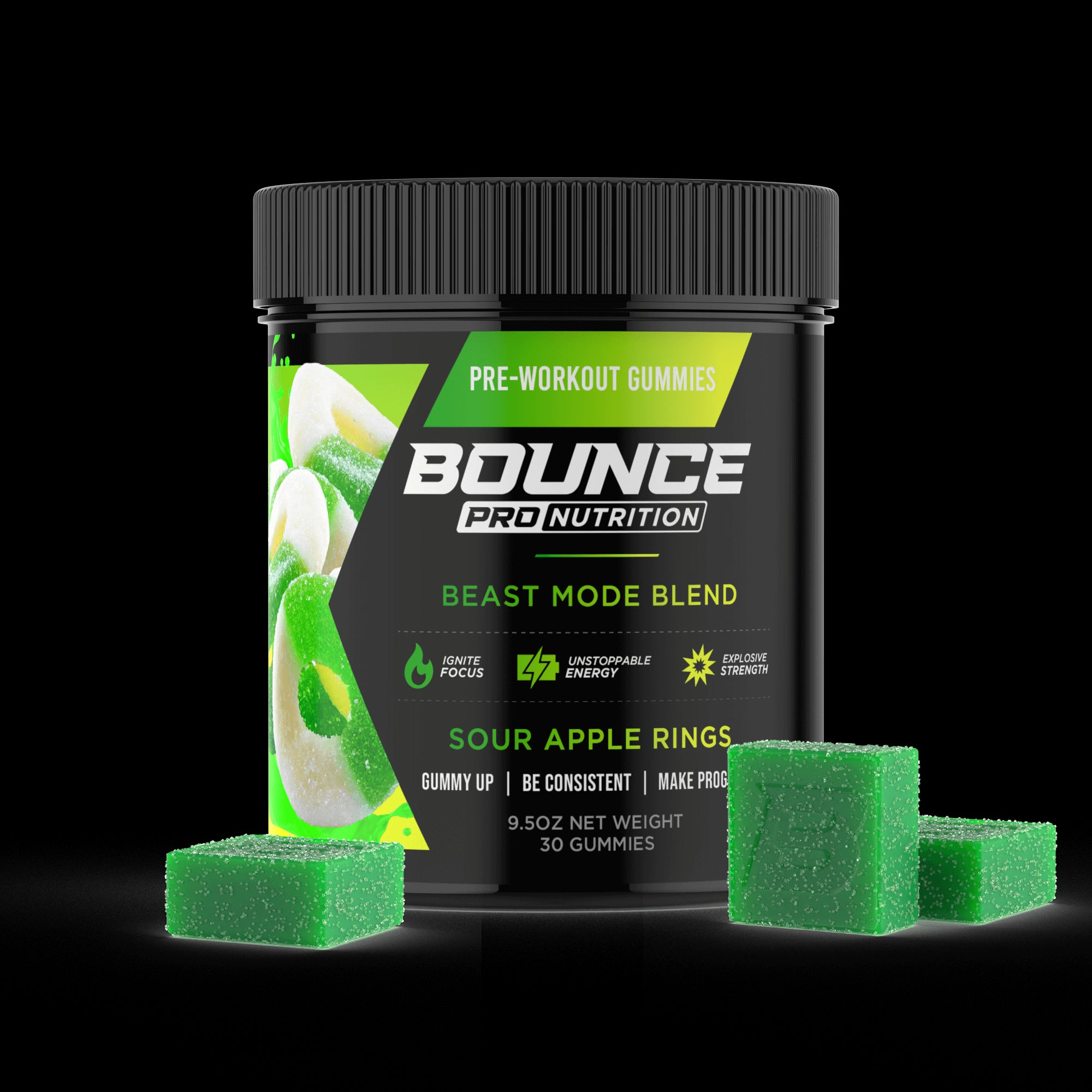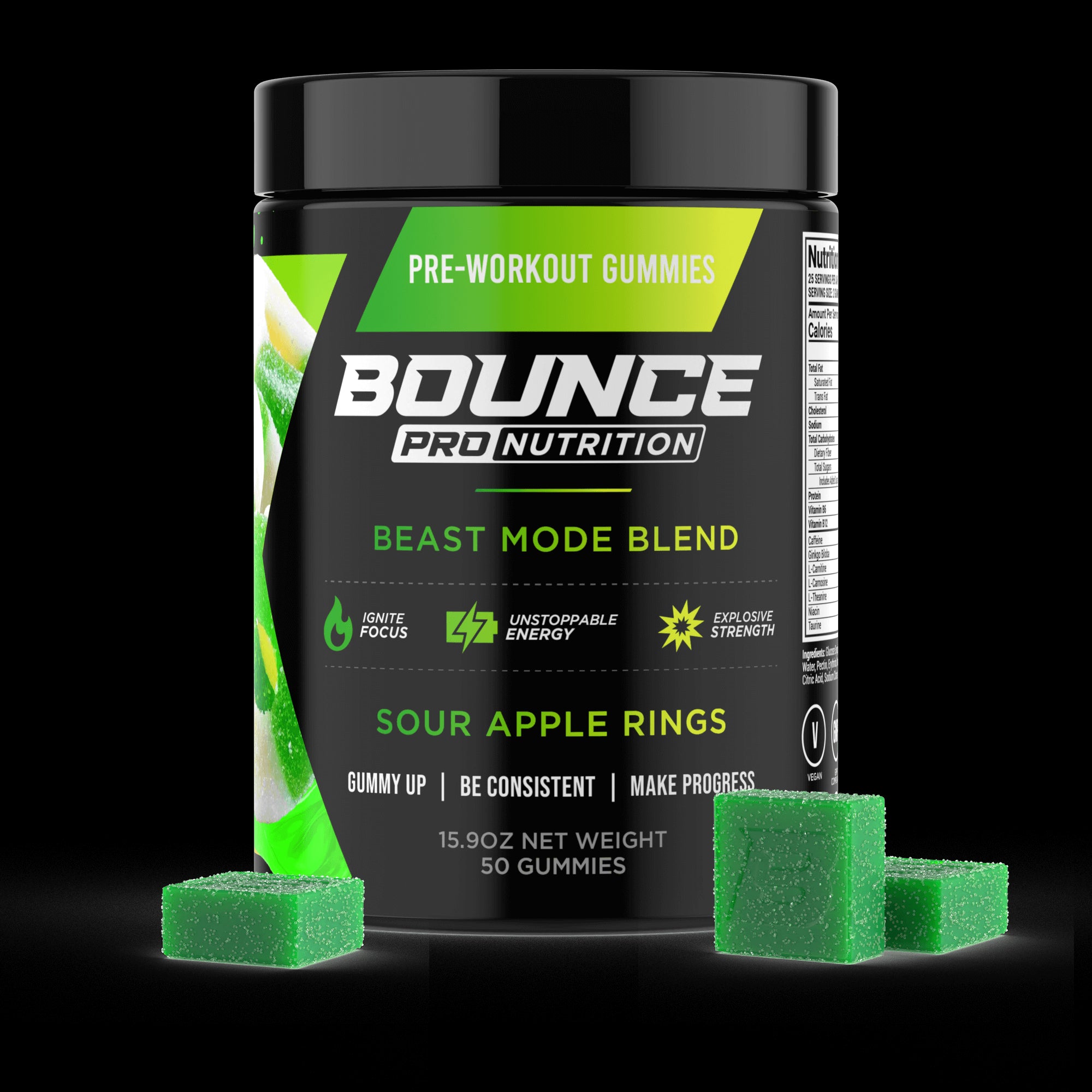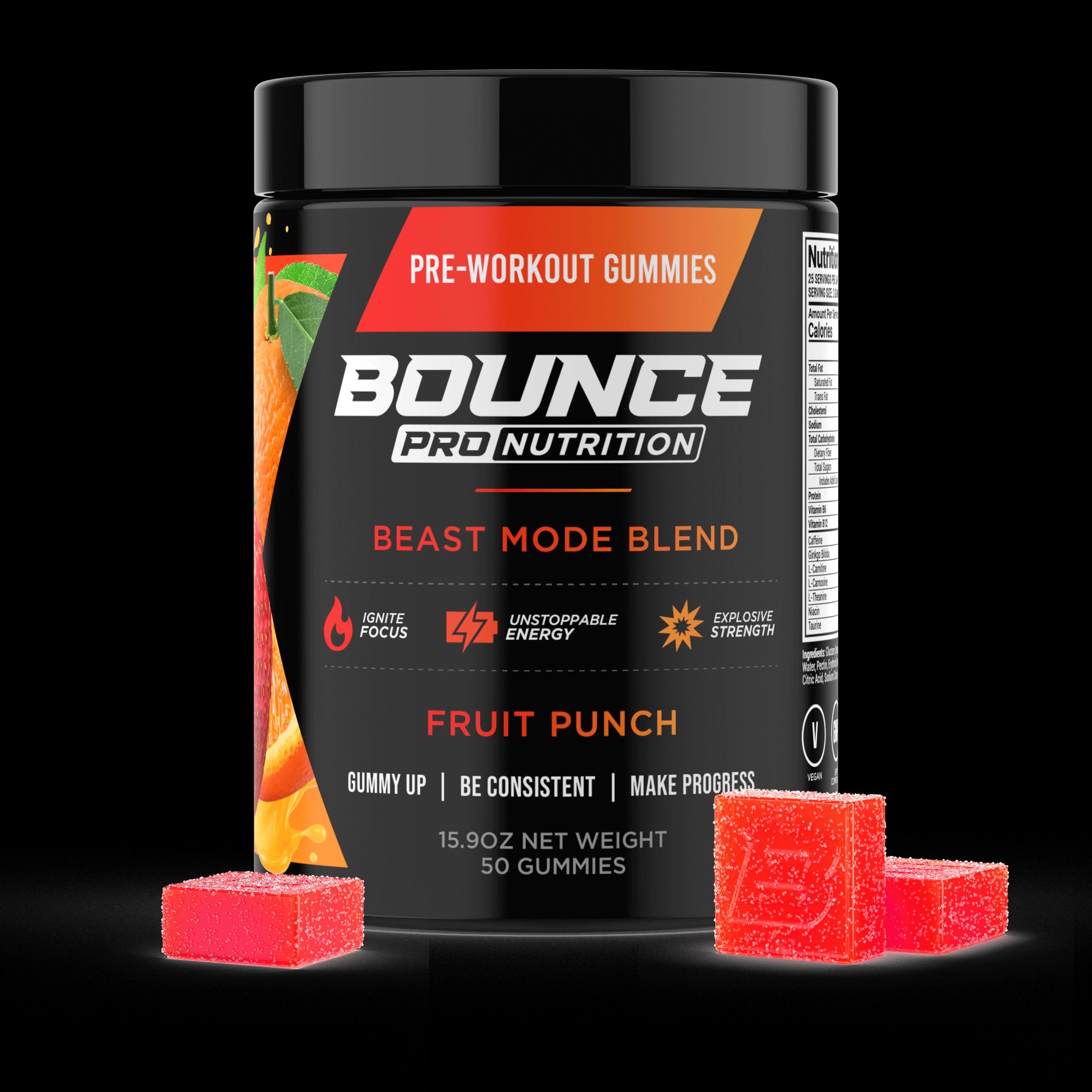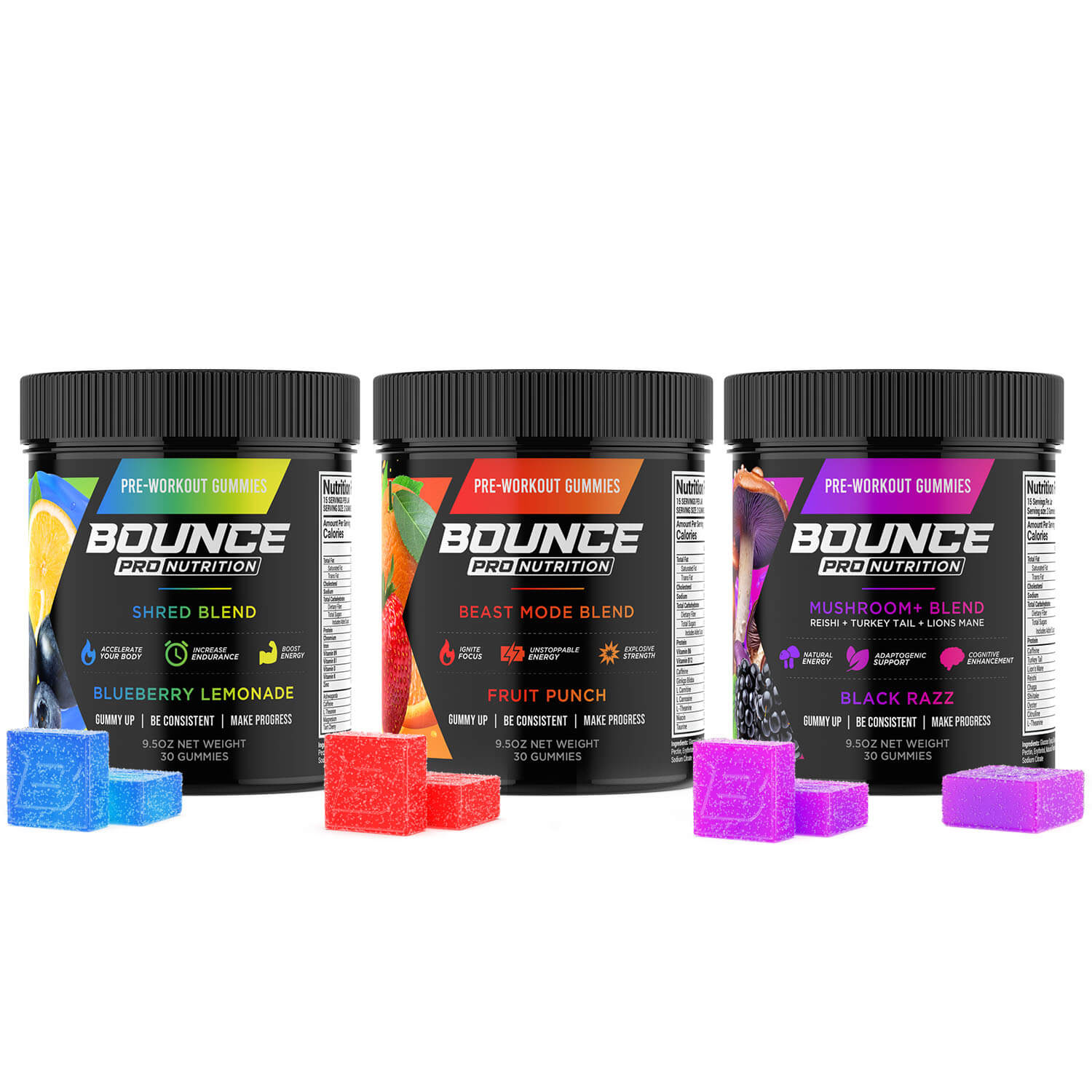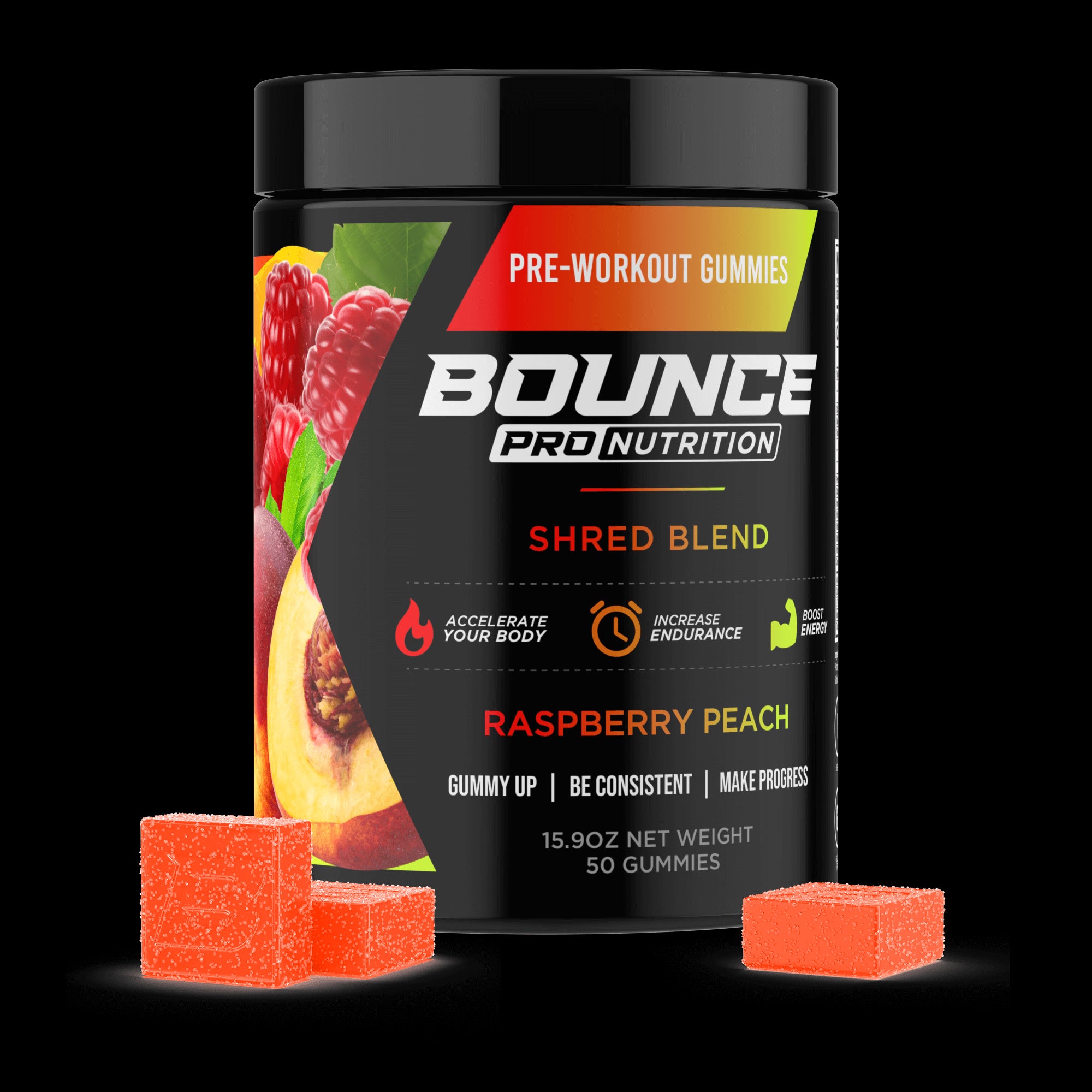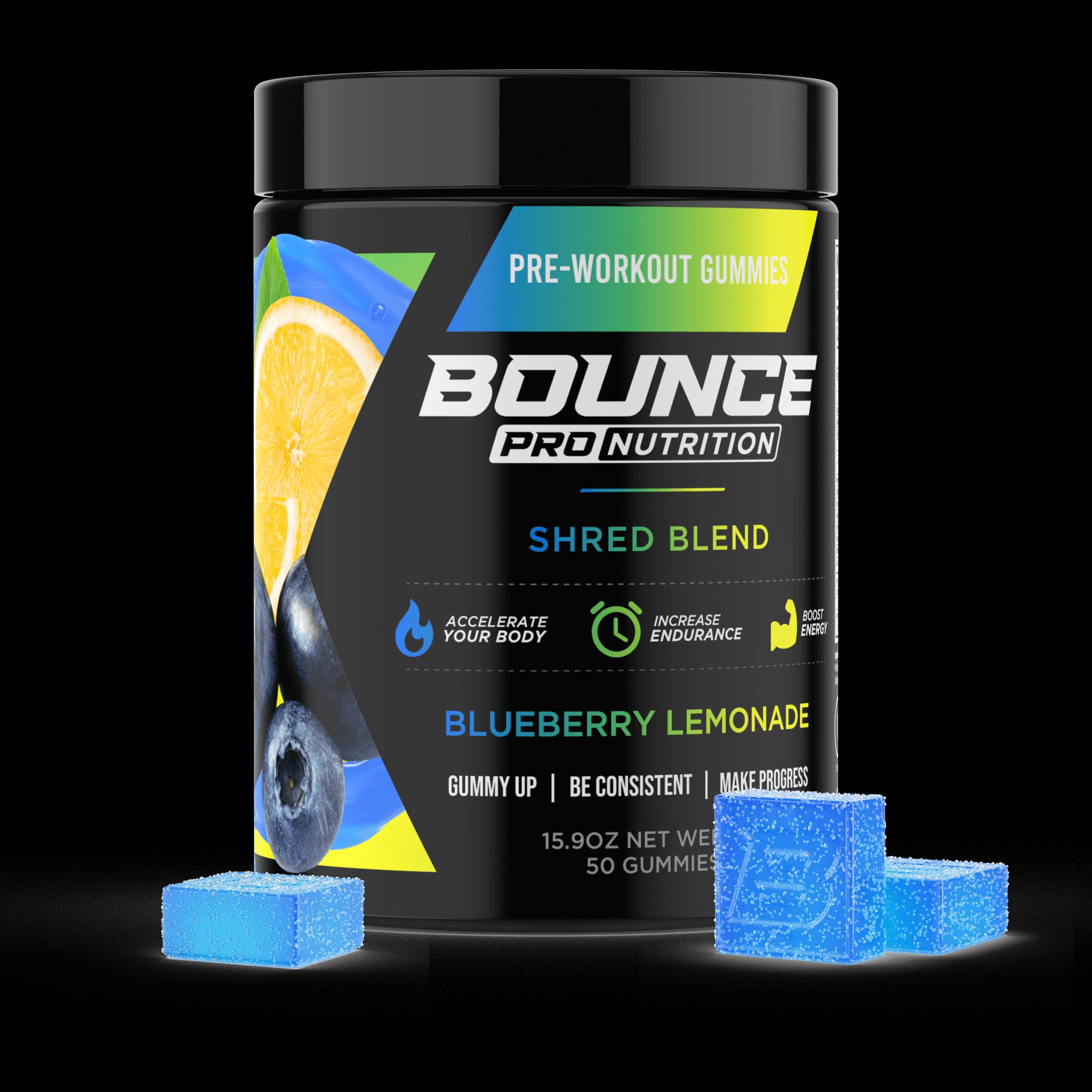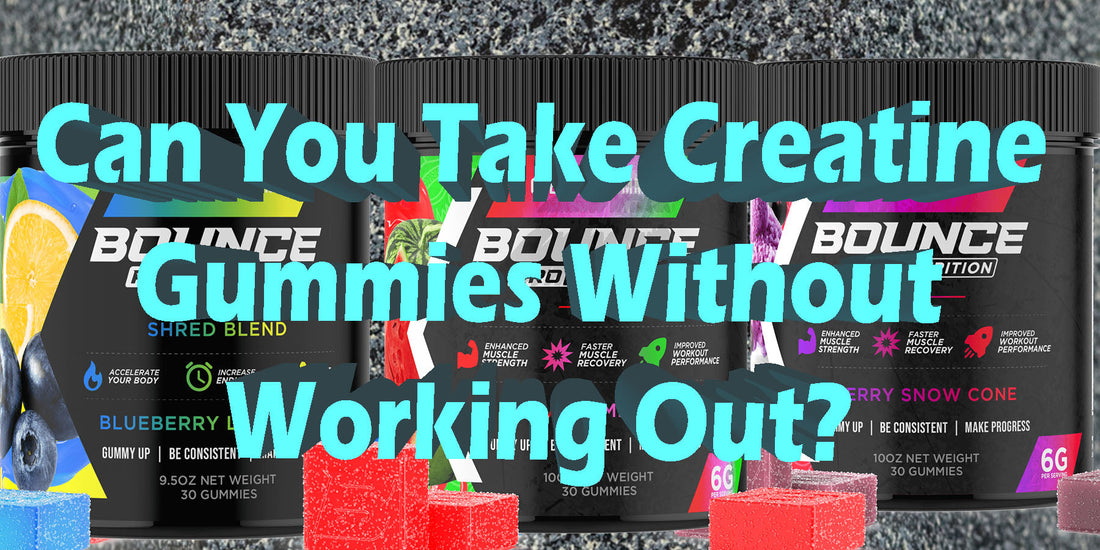In the world of fitness supplements, creatine has earned its place on the Mount Rushmore of great-aids, celebrated for its proven ability to boost strength, power, and muscle growth. Its identity is inextricably linked to the clanging of weights and the intensity of a tough training session. We associate its use with the dedicated athlete pushing for a new personal record.
But as creatine’s popularity continues to surge, now in the incredibly convenient and tasty form of a gummy, a new and intriguing question has begun to surface. What happens if you take it on your rest days? Or even more compellingly, what if you take it without having a regular workout routine at all? Does the magic of this potent compound simply vanish without the stimulus of exercise?
These are all reasonable questions to raise, and the answers to them require us to unravel a common misconception and explore the true, underlying mechanism of creatine. It’s a journey that reveals that its power lies not just in the 60 minutes you spend at the gym, but in a 24/7 biological process of saturation and cellular energy support.
TO BUY CREATINE GUMMIES CLICK HERE
What Defines “Working Out”?
Before we can properly explore the role of creatine with or without exercise, it's essential that we first establish a clear and inclusive definition of what it actually means to "work out". The term “workout” often conjures a very specific image: someone in a commercial gym, lifting heavy barbells or running intensely on a treadmill.
While these are certainly valid forms of working out, they represent only a narrow slice of a much broader spectrum of physical activity. At its core, working out can be defined as any planned, structured, and repetitive physical activity that is performed with the intention of improving or maintaining one or more components of physical fitness, such as cardiovascular health, muscular strength, endurance, or flexibility.
This definition is crucial because it encompasses an incredible variety of activities and intensities. A high-intensity interval training (HIIT) session that leaves you breathless is a workout, but so is a gentle, restorative yoga class focused on flexibility and mindfulness. Pushing for a new one-rep max on the deadlift is a workout but so is a brisk 30-minute walk through a park to improve cardiovascular health and manage stress.
The intensity spectrum ranges from a maximal, all-out effort that can only be sustained for seconds, to a low-level activity that can be comfortably maintained for hours. Understanding this allows us to appreciate that "exercise" is not a monolithic concept, and different types of workouts place different demands on the body's energy systems.
Ultimately, the definition of working out should be a personal one, tailored to an individual's goals, abilities, and lifestyle. It is a conscious effort to move one's body in a way that promotes health and well-being. This can include not just the physical benefits of improved strength and stamina, but the profound mental and emotional benefits as well, such as stress reduction, enhanced mood, and improved cognitive function. By broadening our understanding of what constitutes a workout, we can have a more nuanced conversation about how a supplement like creatine might offer benefits to a wider range of people than just the traditional, hardcore gym-goer.
Types of Workouts People Do
The world of fitness is beautifully diverse, offering a vast array of workout styles that cater to different ages, abilities, and aspirations. The way a person chooses to "work out" is a unique expression of their personal goals, whether they are aiming for peak athletic performance, long-term health and mobility, or simply the joy of movement. This choice often evolves throughout a person's life, adapting to the changing needs and capacities of their body. The high-impact, competitive sports of youth may transition to the structured resistance training of middle age, which might later evolve into a focus on balance and mobility in the senior years.
Workouts that Most Seniors Do
For older adults, the primary focus of working out often shifts towards maintaining independence, improving stability, and enhancing overall quality of life. The goal is to build resilience against age-related decline in muscle mass and bone density. Here are some of the most common and beneficial workouts for seniors:
-
Water Aerobics: This is an incredibly popular choice because it offers a fantastic cardiovascular and resistance workout with minimal impact on the joints. The buoyancy of the water supports the body, reducing the stress on knees, hips, and the spine, which is ideal for those with arthritis or other joint issues. The water's natural resistance helps to build strength and improve endurance in a safe, controlled environment. Regular participation can lead to improved heart health, greater muscle tone, and a wonderful sense of community.
-
Tai Chi: This ancient Chinese practice is often described as "meditation in motion" and is exceptionally beneficial for seniors. It involves slow, gentle, and flowing movements that are coordinated with deep breathing, promoting a strong mind-body connection. Tai Chi is renowned for its ability to dramatically improve balance and stability, which is a critical factor in preventing falls, a major health risk for older adults. It also enhances flexibility, reduces stress, and can help to lower blood pressure, making it a truly holistic form of exercise.
-
Chair Yoga: For seniors with limited mobility or balance concerns, chair yoga provides a safe and highly accessible way to reap the benefits of a yoga practice. By using a chair for support, participants can perform a variety of seated and standing poses that improve flexibility, circulation, and body awareness without the risk of falling. It helps to lubricate the joints, reduce stiffness, and can provide significant relief from chronic pain. The practice also incorporates breathing and relaxation techniques that are excellent for mental clarity and stress reduction.
-
Light Strength Training: Incorporating resistance training is vital for combating sarcopenia (age-related muscle loss) and osteoporosis (loss of bone density). This doesn't mean lifting heavy barbells. For seniors, this can involve using light dumbbells, resistance bands, or simple bodyweight exercises like wall push-ups and chair squats. Consistently performing these exercises helps to maintain and even build lean muscle mass and signals the bones to stay strong and dense, which is crucial for maintaining functional strength for daily activities.
Workouts that Most Middle-Aged People Do
For middle-aged individuals, typically navigating the demands of careers and family, workouts often serve the dual purpose of managing stress and combating a more sedentary lifestyle. The focus is on maintaining cardiovascular health, preserving muscle mass, and preventing injuries. These are some common workouts for this demographic:
-
Running/Jogging: As one of the most accessible forms of cardiovascular exercise, running and jogging are popular choices for maintaining heart health and managing weight. Many people in this age group participate in local 5k or 10k races, which provide a great sense of motivation and community. It is an effective way to burn calories, strengthen the lower body, and release endorphins that help to combat the stresses of a busy life. Proper footwear and attention to form are key to preventing common running-related injuries.
-
Cycling (Indoor & Outdoor): Cycling is another excellent low-impact cardiovascular option that is much easier on the joints than running, making it a sustainable choice for the long term. Indoor spin classes offer a high-intensity, motivating group experience with great music and a structured workout. Outdoor cycling allows for exploration and fresh air, turning exercise into an adventure. Both forms are fantastic for building leg strength and cardiovascular endurance, contributing significantly to overall heart health.
-
Resistance Training: This becomes increasingly important in middle age to counteract the natural decline in muscle mass and metabolic rate. This typically involves a structured routine at a gym or at home, using free weights, machines, or bodyweight exercises to target all major muscle groups. The goal is not necessarily to become a bodybuilder, but to maintain functional strength, support bone density, improve body composition, and keep the metabolism running efficiently. Consistent resistance training is a powerful tool for healthy aging.
-
Recreational Sports: Many middle-aged individuals stay active by participating in recreational sports leagues or regular games with friends. Activities like golf, tennis, pickleball, or softball provide a fun, social, and competitive outlet for exercise. These sports are great for improving coordination and agility, and they keep fitness engaging and enjoyable. They combine physical activity with social interaction, which is a crucial component of long-term well-being and consistency.
Workouts that Most Young People Do
For young people, including teens and young adults, workouts are often driven by goals of athletic performance, competition, and building a strong, powerful physique. Their bodies are resilient, and their training can be characterized by high intensity and volume. Some of the workouts most popular with this age group are:
-
Team Sports: Participation in competitive team sports like soccer, basketball, football, hockey, or lacrosse is a cornerstone of fitness for many young people. These activities provide an excellent mix of cardiovascular conditioning, skill development, and strength building. The structured practices and competitive games demand a high level of physical output and teach invaluable lessons in teamwork, discipline, and resilience. This is often where the initial interest in performance enhancement through supplements like creatine begins.
-
Heavy Resistance Training: The pursuit of maximal strength and muscle hypertrophy is a primary goal for many young lifters. This involves following structured programs centered around heavy compound lifts like the squat, bench press, and deadlift. The objective is to progressively overload the muscles to stimulate significant gains in both size and strength. This type of training requires a high level of focus, proper technique to prevent injury, and a diet rich in calories and protein to support recovery and growth.
-
High-Intensity Interval Training (HIIT): HIIT workouts are incredibly popular with younger demographics due to their efficiency and intensity. These workouts involve short bursts of all-out, maximum-effort exercise followed by brief recovery periods. A HIIT session can be done with bodyweight exercises, on cardio equipment, or with weights, and it is a powerful tool for improving cardiovascular fitness and boosting metabolism in a short amount of time. The challenging nature of HIIT is highly appealing to those looking to push their physical limits.
-
CrossFit: This branded fitness regimen has a massive following among young people due to its combination of varied functional movements performed at high intensity. A typical CrossFit workout can include elements of weightlifting, gymnastics, and metabolic conditioning all in one session. The strong community aspect, competitive environment, and constantly varied workouts prevent boredom and foster a high level of commitment and camaraderie among participants. It is a demanding discipline that builds a well-rounded and high level of overall fitness.
Working Out at the Gym, at Home, or Outdoors
The environment in which a person chooses to work out profoundly shapes their entire fitness experience. The decision of whether to exercise at a commercial gym, in the comfort of one's own home, or in the great outdoors is a personal one, influenced by factors like budget, lifestyle, personality, and specific training goals. Each location offers a unique set of advantages and disadvantages, providing a different atmosphere, level of equipment access, and social dynamic. Understanding these differences is key to choosing the environment that will best support an individual's long-term consistency and enjoyment of their fitness journey.
Working Out at the Gym
The commercial gym is often seen as the epicenter of the fitness world, and for good reason. Its primary advantage is the sheer variety and quality of equipment available. A well-equipped gym provides access to a vast array of cardio machines, resistance training machines that isolate specific muscles, and an extensive selection of free weights like barbells, dumbbells, and kettlebells. This allows for an almost infinite number of exercise variations, which is ideal for those following structured bodybuilding programs or anyone who enjoys variety in their routine. For individuals serious about progressive overload, the gym's incremental weight stacks and extensive dumbbell racks are indispensable tools for making steady progress over time.
Beyond the equipment, the gym environment itself can be a powerful motivator. Being surrounded by other like-minded individuals who are all working hard towards their own goals can create a palpable sense of energy and shared purpose. This atmosphere can provide a significant psychological boost, encouraging you to push harder than you might on your own. Furthermore, most gyms offer group fitness classes, ranging from yoga and Pilates to high-intensity spin and kickboxing. These classes provide expert instruction, a structured workout, and a strong sense of community and accountability, which can be incredibly helpful for those who thrive in a group setting or are new to exercise.
However, the gym experience is not without its drawbacks. The most obvious is the financial cost of a monthly or annual membership, which can be a significant budget consideration for many. There is also the logistical commitment of time and travel required to get to and from the gym, which can be a barrier for those with busy schedules. For some, particularly beginners, the gym environment can feel intimidating or overwhelming, a phenomenon often referred to as "gymtimidation". The fear of being judged or not knowing how to use the equipment properly can be a powerful deterrent, making the perceived social pressure a clear negative aspect of the experience.
Working Out at Home
The primary and most compelling advantage of working out at home is the unparalleled convenience it offers. There is no travel time, no waiting for equipment, and no need to adhere to a gym's operating hours; your workout can happen whenever you have a spare moment. This flexibility is a game-changer for busy parents, professionals with demanding schedules, or anyone who finds the logistics of going to a gym to be a major barrier to consistency. The home environment also provides complete privacy, which can be incredibly liberating for individuals who feel self-conscious or intimidated working out in front of others. It allows you to focus entirely on your workout without any social pressure or distractions.
Financially, working out at home can be significantly more cost-effective in the long run. While there can be an initial investment in equipment, it eliminates the recurring expense of a monthly gym membership. A highly effective home gym can be built over time, starting with just a few essentials like resistance bands, a yoga mat, and a set of adjustable dumbbells. The rise of countless high-quality fitness apps and online streaming services also means that expert-led workouts, from yoga to HIIT to strength training, are now more accessible and affordable than ever before, bringing the group class experience directly into your living room.
Despite its many benefits, the home workout environment does present its own set of challenges. The most significant is often the limited access to a wide variety of heavy equipment, which can make progressive overload for serious strength training more difficult. While creative solutions exist, a home gym is unlikely to replicate the sheer range of options available at a commercial facility. Additionally, the home is filled with potential distractions, from family members and pets to household chores and the lure of the television. It requires a high level of self-discipline and motivation to stay focused and consistently push yourself without the external energy and accountability of a gym environment.
Doing Workouts Outdoors
Exercising in the great outdoors offers a unique and powerful set of benefits that simply cannot be replicated within four walls. The most immediate advantage is the sensory experience; the fresh air, sunshine, and changing scenery can make exercise feel less like a chore and more like a recreational activity. This can dramatically improve mood and reduce feelings of stress and anxiety, thanks to the combined effects of physical activity and exposure to nature. Outdoor workouts also provide a natural source of Vitamin D from sunlight, which is essential for bone health, immune function, and overall well-being. The constantly varied terrain of a park or trail also provides a unique challenge, naturally engaging more stabilizer muscles and improving balance and proprioception compared to the flat, predictable surfaces of a gym floor.
Another major benefit of outdoor workouts is that they are almost always completely free. You don't need a membership to run in a park, do bodyweight exercises on a playground, or hike a local trail. This makes fitness highly accessible to everyone, regardless of their financial situation. The outdoor environment invites creativity and playfulness into your routine. A park bench can become a tool for push-ups and step-ups, a field can become a space for sprints and agility drills, and a long bike path can become your cardio machine for the day. This variety can help to prevent the monotony that sometimes comes with a repetitive indoor routine.
The primary drawback of outdoor workouts, however, is their complete dependency on the weather. Rain, snow, extreme heat, or cold can all make exercising outdoors unpleasant or even unsafe, forcing you to have a reliable indoor backup plan. Depending on your location, particularly in urban areas, safety can also be a concern, requiring awareness of traffic and your personal security, especially during early morning or late evening hours. Finally, for those whose goals are centered around heavy strength training, the outdoors offers very limited options for equipment, making it difficult to perform many of the foundational exercises needed for building maximal strength and muscle.
Your Key Insights into Creatine Gummies
Creatine gummies represent a significant and user-friendly innovation in the sports nutrition industry, fundamentally changing how individuals consume one of the most effective performance supplements on the market. They function by taking creatine, most often the highly researched creatine monohydrate, and encapsulating it into a convenient, palatable, chewable format. This novel approach completely eliminates the common hassles of its powdered predecessor—there is no need for mixing, shaking, measuring, or dealing with potential grittiness.
The appeal is rooted not just in this profound simplicity but also in their candy-like nature, which transforms taking a daily supplement from a mundane task into a quick and enjoyable moment. This evolution from a functional powder to a solid, portable edible marks a user-centric shift in product design, prioritizing ease of use without compromising the ingredient's intended benefits.
The history of the creatine gummy is a very recent but impactful story built upon the foundation of two larger market trends. While creatine powder exploded in popularity within athletic circles in the 90s, it existed almost exclusively in that single format for the better part of three decades. In the 2010s, the broader vitamin and supplement industry underwent a "gummification" revolution, turning everything from multivitamins to specialty nutrients like apple cider vinegar into chewable forms that consumers loved.
Visionary brands in the sports nutrition space saw this as the perfect solution to common user complaints about creatine powder, leading to the development of the first creatine gummies. This new format was designed to appeal to a new generation of fitness enthusiasts who value both proven performance and an exceptional user experience.
The creation of creatine gummies is a sophisticated process that blends pharmaceutical-grade manufacturing techniques with the science of confectionery. It is a multi-step procedure meticulously designed to ensure that the active creatine ingredient is evenly distributed, remains stable, and maintains its full potency within the final gummy product. The ultimate goal is to craft a supplement that is not only biologically effective but also has a consistent and enjoyable taste and texture. So, here’s how they’re typically made:
-
Ingredient Weighing and Blending: The process begins with the precise measurement of the active ingredient, creatine monohydrate or another form, and any other active components like vitamins or electrolytes. These are then carefully blended with the other components of the gummy base, including sweeteners like corn syrup or sugar, a gelling agent like gelatin or the vegan alternative pectin, water, and specific flavor and color systems. This initial blending is critical for ensuring a perfectly homogenous mixture.
-
Cooking the Slurry: This blended mixture, now referred to as a "slurry," is gently heated in a large, specialized cooker. This step is essential for completely dissolving all the solid ingredients, activating the gelling agent, and achieving the exact consistency required for the perfect gummy texture. The temperature and cooking duration are tightly controlled to prevent any potential degradation of the creatine.
-
Depositing into Molds: Once the slurry has reached the optimal temperature and viscosity, it is transferred to a machine called a depositor. This equipment precisely injects the warm liquid into vast trays of food-grade starch that has been imprinted with the desired gummy shape. The starch mold prevents the creatine gummies from sticking and plays a key role in drawing moisture out as they begin to set.
-
Setting and Curing: The filled molds are then carefully moved into a climate-controlled room for curing. Here they will rest for 24 to 48 hours. During this crucial resting period, they cool down and set as the gelling agent solidifies and excess moisture evaporates, ultimately creating their characteristic chewy texture.
-
Demolding and Finishing: After the curing process is complete, the set gummies are firm enough to be separated from their starch molds, often in a large tumbling drum. The starch is sieved out and recycled. The gummies are then lightly coated, often with carnauba wax or a light oil, to prevent them from sticking together in the final packaging and to give them an appealing gloss.
-
Quality Control and Packaging: Before being bottled, the finished creatine gummies undergo a series of rigorous quality control tests. These laboratory analyses verify that the potency is accurate, that the product is pure, and that it is free from any contaminants. Once they pass inspection, they are packaged in airtight bottles or resealable pouches, sealed for freshness and safety, and prepared for distribution.
While most creatine gummies might look similar, their active ingredients can differ, offering consumers choices based on scientific research and marketing claims. The vast majority of products are built around the most trusted form, but variations exist that cater to different preferences and digestive sensitivities. Understanding these types below is key to selecting a product that aligns with your personal needs and supplementation:
-
Creatine Monohydrate Gummies: This is by far the most common and popular type, and for good reason. Creatine monohydrate is the form of creatine that has been used in the overwhelming majority of scientific studies and has been consistently proven to be both safe and effective for increasing muscle stores, strength, and performance. These gummies deliver the gold standard of creatine in the most convenient format available.
-
Creatine HCl (Hydrochloride) Gummies: This type features creatine that has been bonded with a hydrochloride molecule. The primary claim behind Creatine HCl is that this process increases its solubility in water and its overall acidity, which may lead to enhanced absorption and a lower required dose for some individuals. Users who experience minor digestive upset or bloating with monohydrate may prefer HCl gummies for their purported ease of digestion.
-
Buffered Creatine Gummies: Buffered creatine, often marketed under the brand name Kre-Alkalyn®, is creatine monohydrate that has been mixed with an alkaline powder (like baking soda) to raise its pH level. The theory behind this formulation is that the higher pH protects the creatine from being broken down into its inert waste product, creatinine, by stomach acid, thus leading to better absorption and less waste. These gummies appeal to consumers who believe this buffering process enhances the stability and effectiveness of the creatine molecule.
Now, the effects of creatine gummies are a direct result of the creatine molecule they deliver to your body. It is important to remember that, unlike pre-workout gummies, creatine gummies do not contain stimulants and therefore do not provide an immediate "kick" or energy rush. Instead, their benefits are cumulative and are realized after a period of consistent use has allowed the muscles to become fully saturated. Creatine works by increasing the stores of phosphocreatine within your muscles, which is a rapidly available energy source. This enhanced reserve helps your body regenerate ATP (adenosine triphosphate), the primary fuel for short, explosive movements like lifting weights or sprinting. Over time, this can lead to improved strength, increased power output, the ability to perform more repetitions, and enhanced muscle growth when combined with a consistent resistance training program.
Creatine gummies are primarily designed for the modern supplement user who values convenience, consistency, and an enjoyable experience above all else. This includes a wide range of individuals, from dedicated athletes to casual gym-goers, who dislike the taste or gritty texture of traditional creatine powders. The appealing format is particularly attractive to younger populations, including teens, who may be more inclined to take a tasty gummy than to mix a powder. Furthermore, the pre-portioned nature of each gummy removes any guesswork or need for scales, making them highly appealing to people who are new to creatine supplementation and simplifying the process for anyone looking to make their daily supplement routine as simple and foolproof as possible.
The Question That Some People Might Have: “Can You Take Creatine Gummies Without Working Out?”
We now arrive at the fascinating and surprisingly common question that challenges the conventional wisdom surrounding creatine: can you—and should you—take creatine gummies even if you are not working out? The immediate, science-backed answer is yes; you absolutely can. The reason for this lies in a fundamental principle of how creatine works, which is often misunderstood.
Creatine's benefits are not tied to the single hour you spend exercising; they are tied to the process of keeping your muscles fully saturated with phosphocreatine on a 24/7 basis. This process of saturation is what gives your muscles the enhanced energy reserve to call upon when needed. Therefore, the role of creatine on your rest days, or even during periods of no exercise, is not just acceptable but is a crucial part of an effective supplementation strategy for those who are physically active.
For anyone who exercises regularly, taking creatine gummies on their rest days is a non-negotiable part of the protocol. Think of your muscle's creatine stores as a swimming pool that you want to keep filled to the brim. Your workouts are like a big pool party where a lot of water gets splashed out (i.e., creatine is used for energy).
Taking your daily dose of creatine is the process of using a hose to refill the pool. If you stop refilling the pool on your off days, the water level will naturally begin to drop due to daily use and natural breakdown. Continuing to take your creatine gummies on rest days ensures the "pool" stays completely full, so that when you go to have your next "party" (your workout), you have the maximum amount of water available from the very start.
But what about the other side of the question: taking creatine gummies without having any regular workout routine at all? This is where the benefits shift away from performance enhancement and toward other potential areas of wellness. An exciting and growing body of scientific research is exploring the significant role creatine plays in brain health.
Your brain is an incredibly energy-demanding organ that also uses the ATP-PC system to fuel its activities. Studies have suggested that creatine supplementation may help to support cognitive functions like memory and processing speed, and thus, may also help to reduce mental fatigue. For a non-exercising individual, taking creatine could be a strategy aimed at supporting their brain's energy levels rather than their muscles'.
So, what physically happens if you take creatine gummies without the stimulus of resistance training? Your muscles will still absorb the creatine and become saturated, and they will still draw in extra water through cell volumization. This may lead to a slight increase on the scale due to water weight and may give your muscles a slightly "fuller" appearance.
However, without the demanding stimulus of working out, your body has no signal to initiate the process of hypertrophy, which is the building of new muscle tissue. You will not build significant muscle mass or strength simply by taking creatine gummies and remaining sedentary. The creatine loads the weapon, but only resistance training can pull the trigger for muscle growth.
The gummy format itself adds one final consideration for the non-exercising individual. Unlike zero-calorie creatine powder, creatine gummies contain a small number of calories, primarily from the sugars and gelling agents used to create them. While the amount is usually modest, for a sedentary person who is carefully managing their daily calorie intake, these extra calories should be accounted for. It's a minor but important detail to consider when deciding to supplement with creatine gummies without a corresponding exercise program to burn off those additional calories. This makes reading the nutritional label just as important as reading the supplement facts.
Main Pros & Cons of Taking Creatine Gummies Without Working Out
Deciding to take creatine gummies on days you don't exercise, or even if you don't have a regular fitness routine, comes with a unique set of potential benefits and drawbacks. It's a different context than taking it for immediate performance enhancement, so the considerations shift accordingly.
Pros:
-
Maintains Crucial Muscle Saturation for Athletes: For anyone who works out, this is the single most important benefit. Taking your creatine gummies on rest days is essential for maintaining the high levels of phosphocreatine in your muscles that you've worked to build up. This ensures that when you return to the gym for your next session, your energy systems are fully primed and ready to perform at their peak, preventing any drop-off in strength or power. It bridges the gap between workouts, making your supplementation strategy seamless and consistently effective.
-
Supports Cognitive Function and Brain Health: This is a major advantage for exercising and non-exercising individuals alike. The brain is a high-energy organ that also uses creatine to fuel its processes. A growing body of research suggests that daily creatine supplementation can support cognitive functions such as short-term memory, reasoning, and processing speed. For anyone looking for a mental edge, from students to busy professionals, this is a compelling reason to take creatine regardless of workout habits.
-
May Help Reduce Mental Fatigue: In addition to supporting cognitive performance, creatine may also play a role in mitigating mental fatigue. This can be particularly beneficial during periods of high stress or sleep deprivation. By providing the brain with more readily available energy, creatine supplementation may help to reduce the feelings of mental exhaustion that can come from long hours of work or study. This makes it a potentially valuable tool for maintaining mental stamina throughout a demanding day.
-
Can Help Preserve Muscle Mass During Inactivity: For athletes who are injured or for older adults who are less active, creatine may play a role in muscle preservation. Some research indicates that by keeping the muscle cells hydrated and volumized, creatine may help to reduce the rate of muscle atrophy (wasting) during periods of disuse. While it won't prevent all muscle loss, it could be a supportive nutritional strategy to help maintain a healthier baseline of muscle mass during periods of forced inactivity.
-
Unmatched Convenience for Daily Consistency: The gummy format makes daily adherence incredibly simple. For many people, the easiest way to remember to take a supplement is to make it a consistent daily habit, like taking a multivitamin in the morning. Creatine gummies allow for this simple routine, removing the mental link that it must only be taken with a workout shake. This convenience can dramatically improve long-term consistency, which is the true key to success with creatine.
-
Prepares Muscles for Spontaneous Physical Activity: Life is unpredictable, and you might find yourself engaging in spontaneous physical activity, like helping a friend move heavy furniture or joining a pickup game of basketball. By keeping your creatine stores consistently saturated even on non-gym days, you ensure that your muscles are always in a prepared state to handle unexpected physical demands. You will have that extra energy reserve available whenever you might need it, not just during planned workout times.
-
May Offer Neuroprotective Benefits: While much of the research is still preliminary, some studies are exploring the potential neuroprotective properties of creatine. The theory is that by supporting cellular energy and reducing oxidative stress, creatine may help to protect brain cells from certain types of damage. For individuals interested in long-term brain health, this emerging area of research provides another compelling reason to consider daily supplementation, independent of a workout routine.
-
The Simple Carbs Can Provide a Minor Energy Boost: Although creatine itself is not a stimulant, the creatine gummies do contain a small amount of simple carbohydrates from sugar. When taken, this can provide a very mild and quick source of usable energy. For a non-exercising individual, this could be perceived as a small pick-me-up during a mid-day slump, similar to having a small piece of fruit, which can be a pleasant, albeit minor, benefit.
Cons:
-
Will Not Build Significant Muscle Without a Training Stimulus: This is the most important con to understand. Creatine does not magically create muscle tissue. It works by enabling your muscles to perform more work, which then acts as the signal for growth. If you take creatine gummies but remain sedentary, you are missing the essential stimulus needed for hypertrophy. You will not see significant gains in muscle size or strength without consistent resistance training.
-
Can Cause a Small Increase in Weight from Water Retention: One of the primary actions of creatine is to pull water into the muscle cells. While this is a beneficial process known as cell volumization, it does mean that you will likely see a small, rapid increase of a few pounds on the scale when you first start taking it. For a non-exercising individual who is not building muscle, this increase in water weight might be perceived as an undesirable side effect.
-
Adds Unnecessary Sugars and Calories to a Sedentary Diet: Creatine Gummies contain sugar and calories to give them their enjoyable taste and texture. For an active individual who is burning a lot of calories, this is a negligible amount. However, for a sedentary person who is carefully managing their weight, adding these extra daily calories from a supplement whose primary physical benefits they are not maximizing may be counterproductive to their overall dietary goals.
-
Potential for Minor Gastrointestinal Discomfort: While most people tolerate creatine very well, a small percentage of individuals may experience minor digestive issues like bloating or an upset stomach, particularly when first starting. Without the increased blood flow and metabolic activity of a workout, a sedentary person might be slightly more aware of this discomfort if it occurs. This is why starting with a lower dose and staying hydrated is always recommended.
-
The Cost of a Supplement Without Maximizing Its Benefits: Creatine supplements are an ongoing expense. For an athlete, this cost is a worthwhile investment that pays dividends in their performance and results. For a non-exercising individual, paying for a supplement whose primary and most powerful benefits—enhanced strength, power, and muscle growth—are being left on the table might not be the most cost-effective use of their resources, especially if they are only seeking the cognitive benefits.
Bounce Nutrition Creatine Gummies Can Be Taken Even if You Aren’t Working Out
Bounce Nutrition Creatine Gummies provide incredible potency, effectiveness, and overall strength. These gummies deliver an impressive 6 grams of creatine monohydrate per serving (containing 2 grams of creatine per gummy). This is the lowest serving size creatine gummy on the market. You only need 3 gummies instead of 5 or even 6 to get the full dose. As well, 3 gummies is 6g of creatine. Not to mention, the quality of our creatine and the superior formulation is designed to maximize absorption and efficiency. Can’t forget either, that these gummies aren’t only strong but also delicious:
-
Our traditional Creatine Gummies are available in Berry Snow Cone, Cherry Lime, Peach Rings, and Watermelon.
-
Our Creatine Sour Series flavors consist of Blue Razz and Strawberry Kiwi.
Additionally, Bounce Nutrition Creatine Gummies are lab tested and shown right on our website for proof you’re getting what you’re buying.
Because of Creatine’s Overall Versatility, You Can Take Creatine Gummies without Working Out (But the Gains Might Vary)
In the final analysis, the question of taking creatine gummies without working out invites us to broaden our very definition of what a supplement can be. It encourages a shift in thinking, from viewing creatine as a product exclusively for the gym to recognizing it as a versatile compound that supports the body's fundamental energy systems. The choice to supplement on a rest day or even without a formal fitness regimen is not a misuse of the product; it is simply a decision to leverage a different facet of its scientifically-backed benefits.
While the most dramatic physical gains will always be unlocked by pairing creatine with hard training, its support for cognitive function and muscle preservation stands on its own merit. Ultimately, this versatility empowers you to use creatine not just as a tool to enhance your workout, but as a consistent daily strategy to support the energy needs of both your body and your brain.


